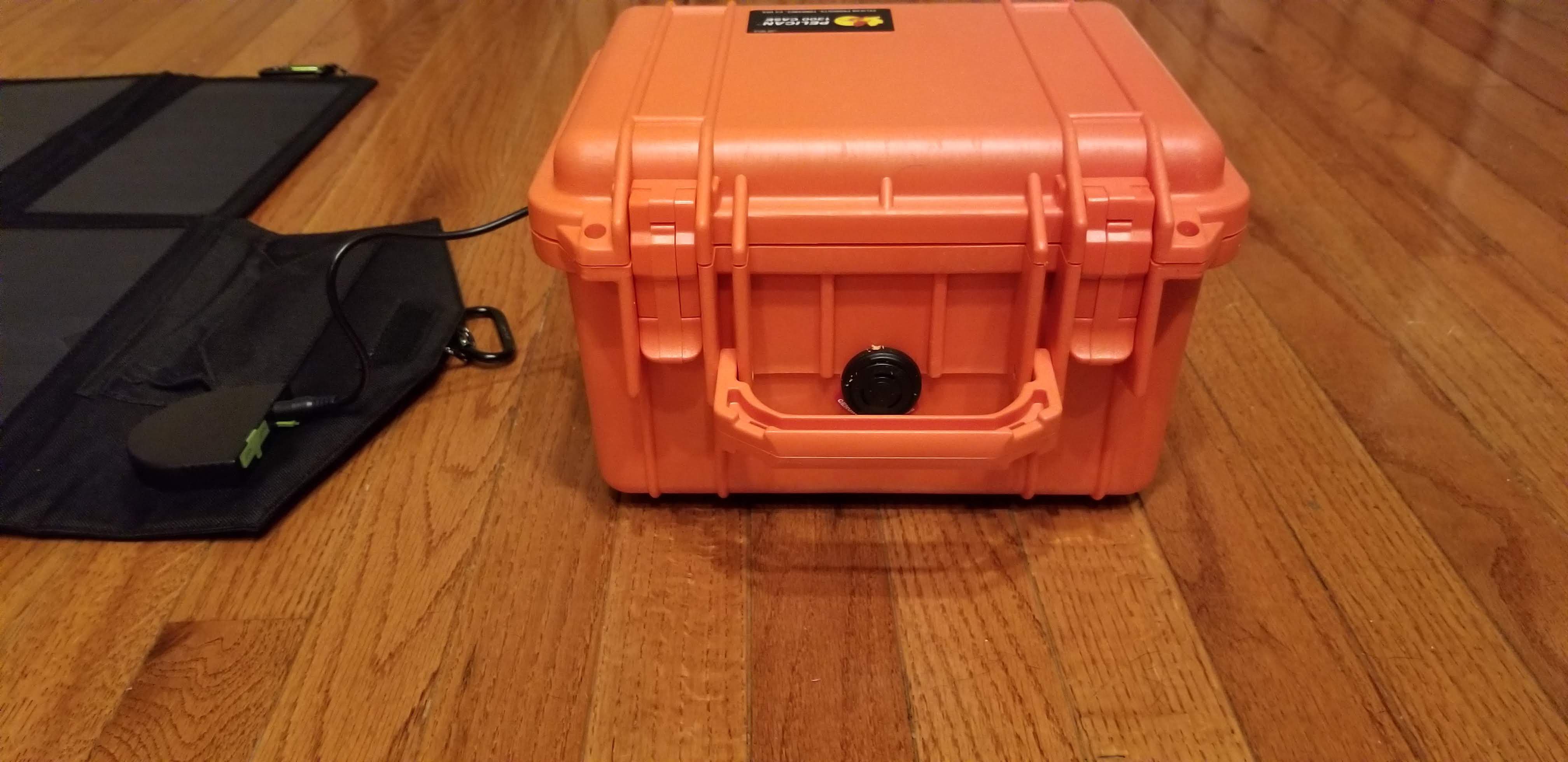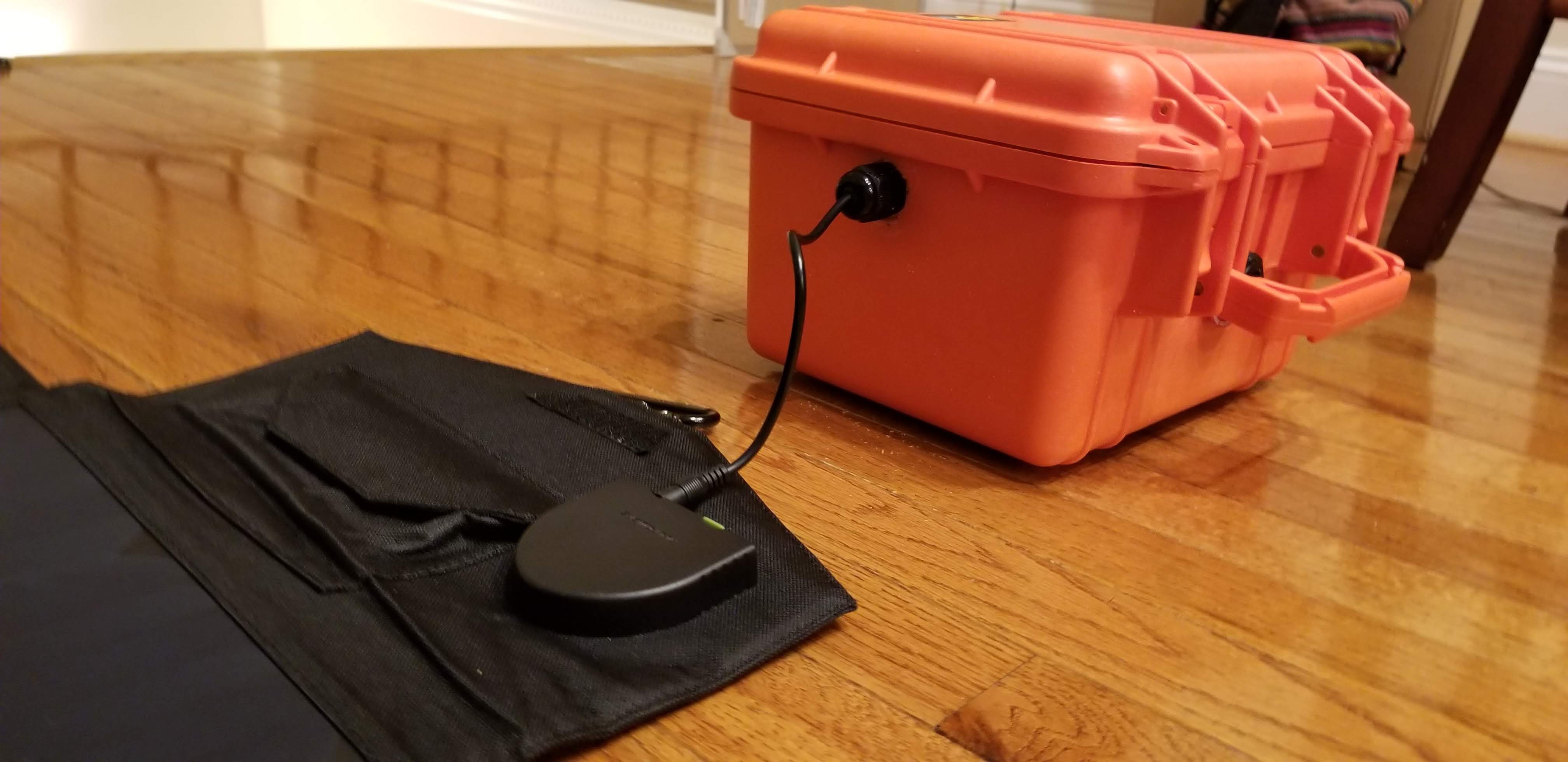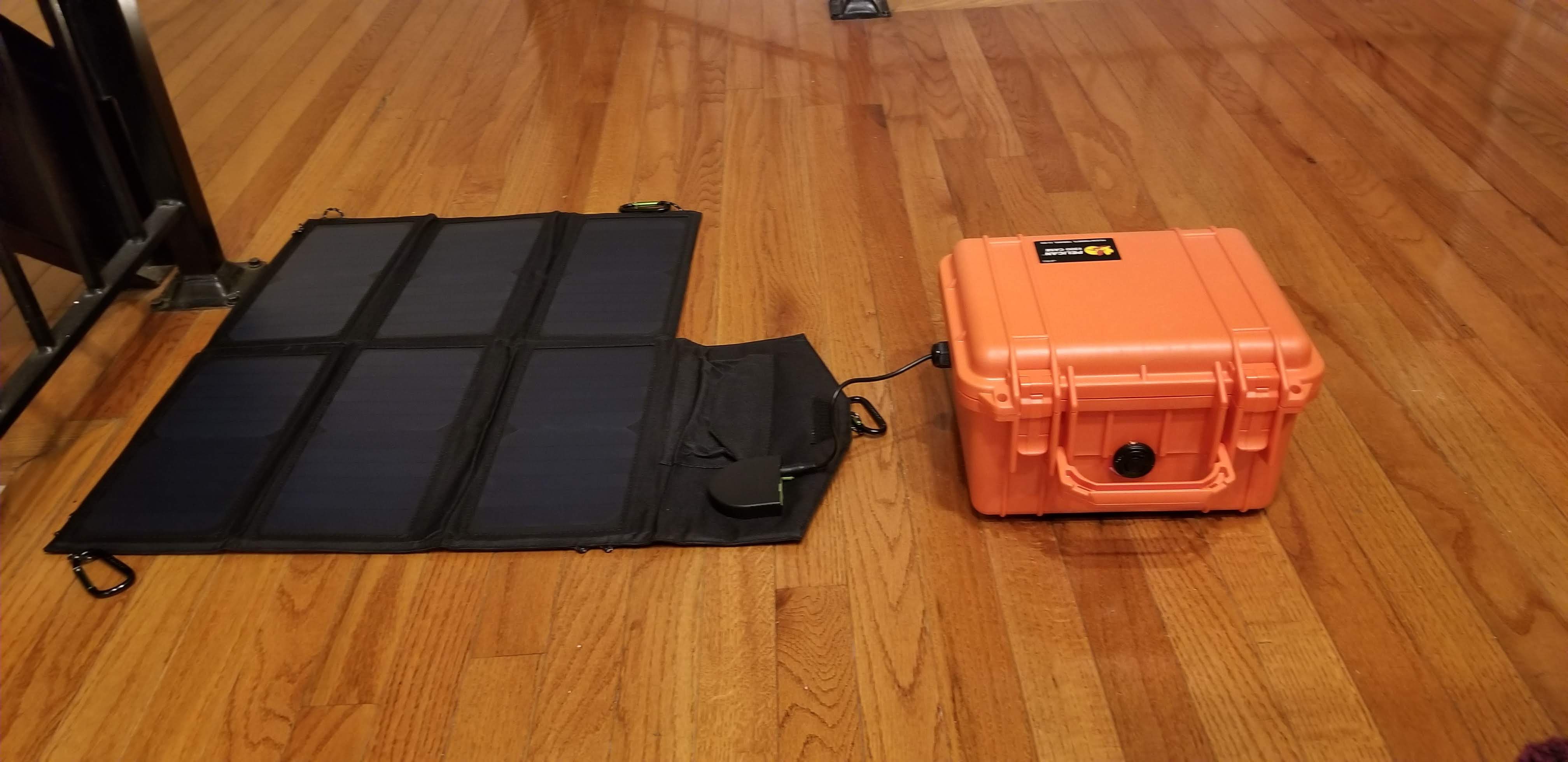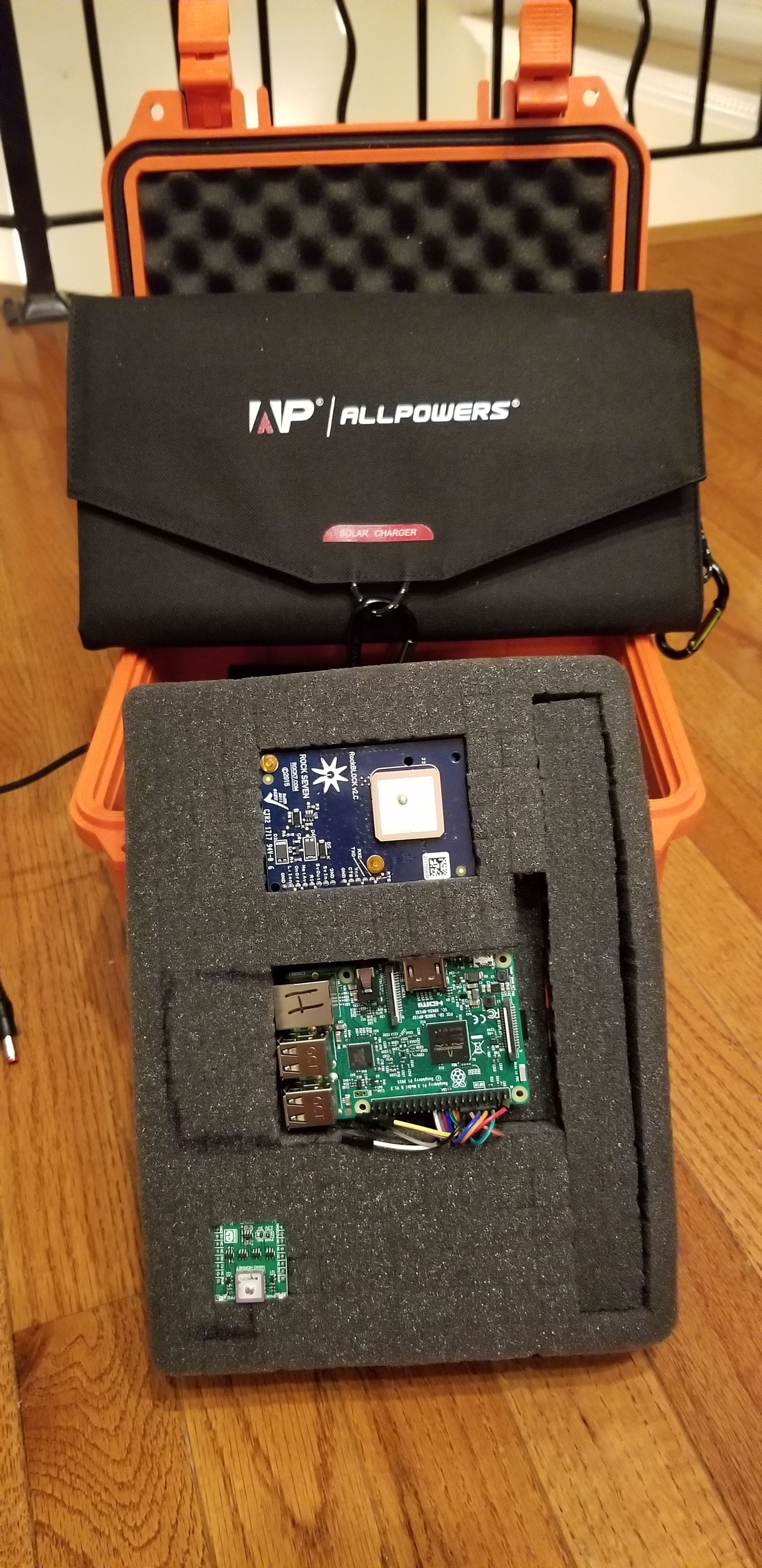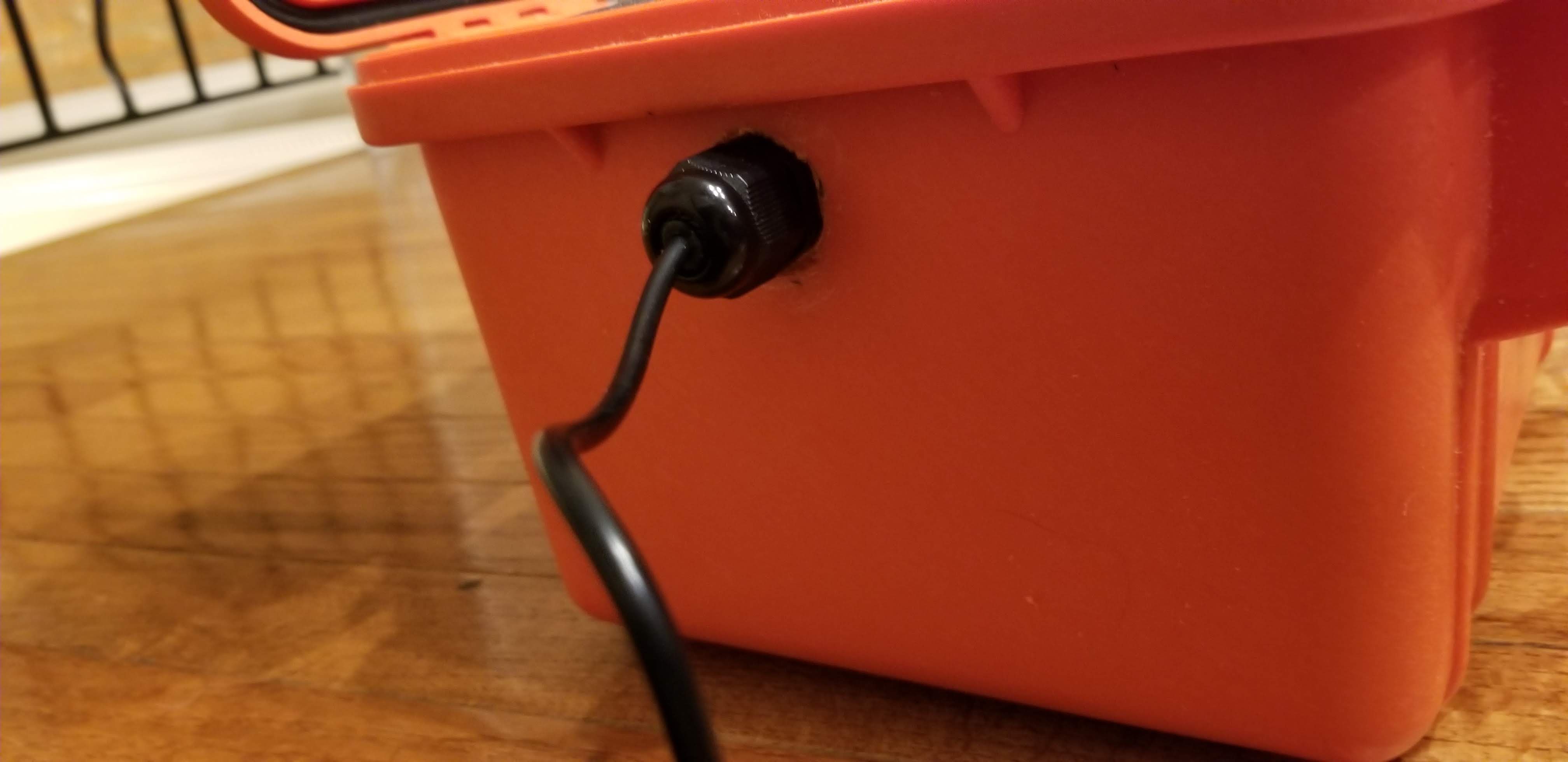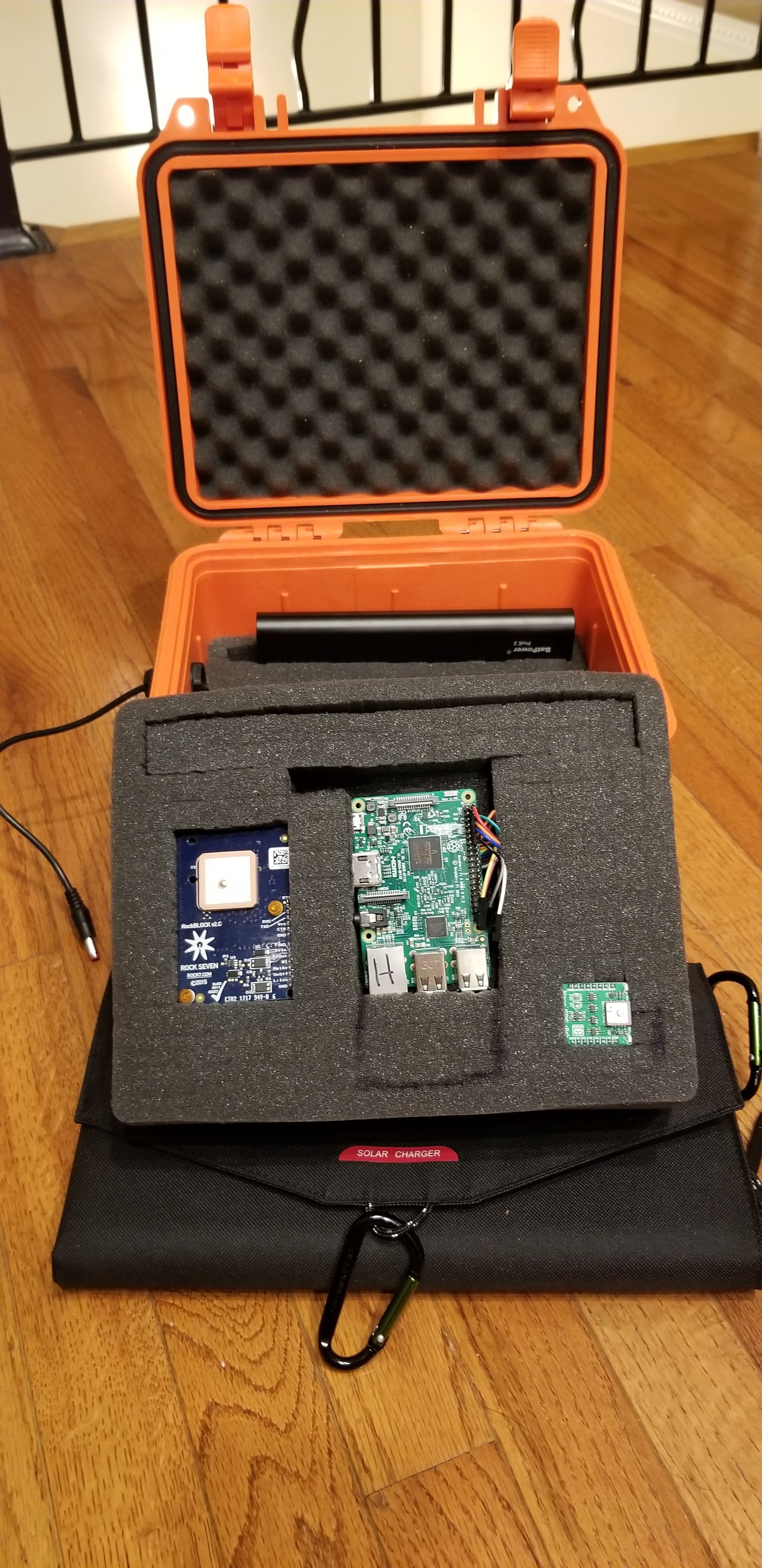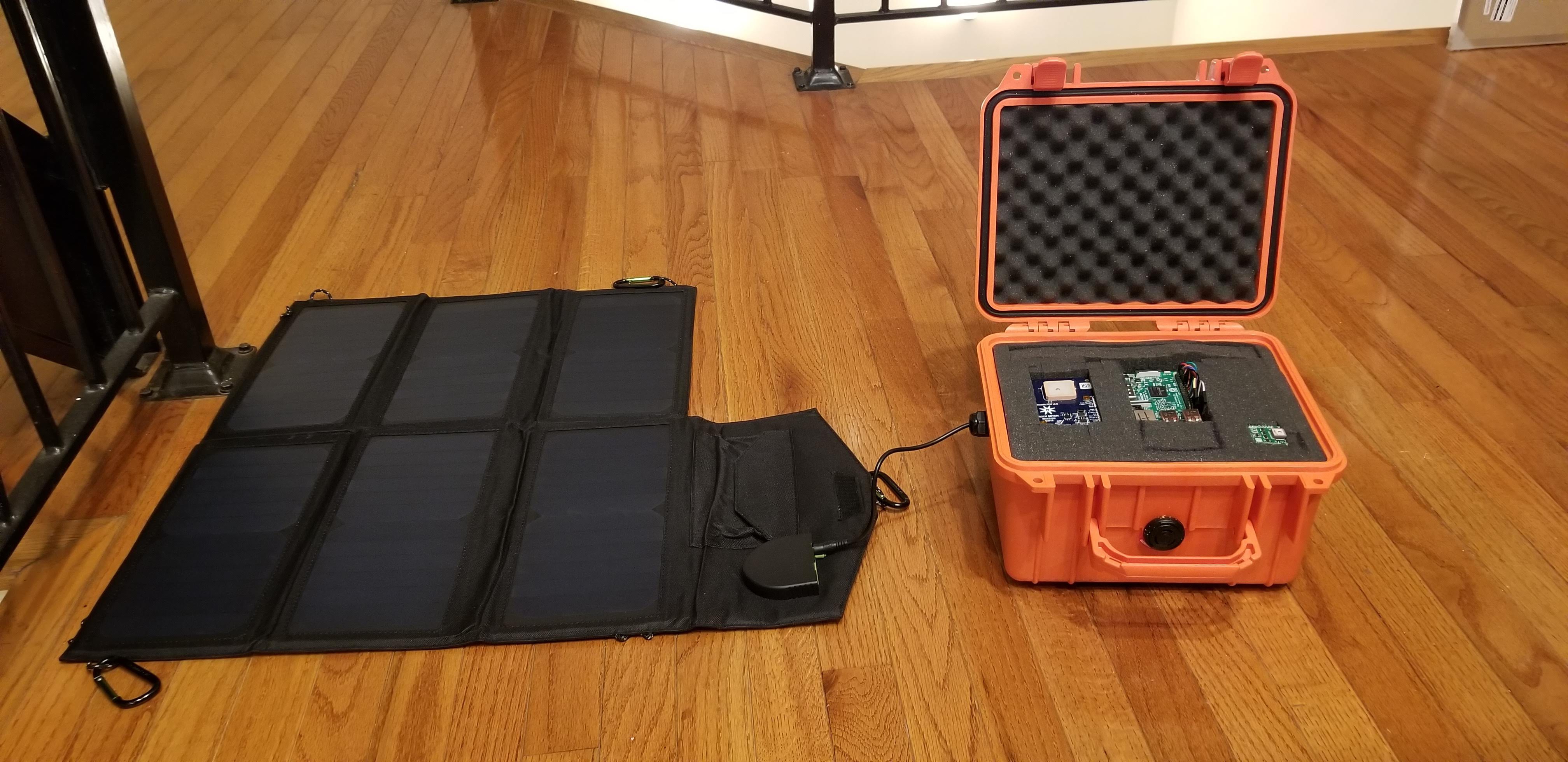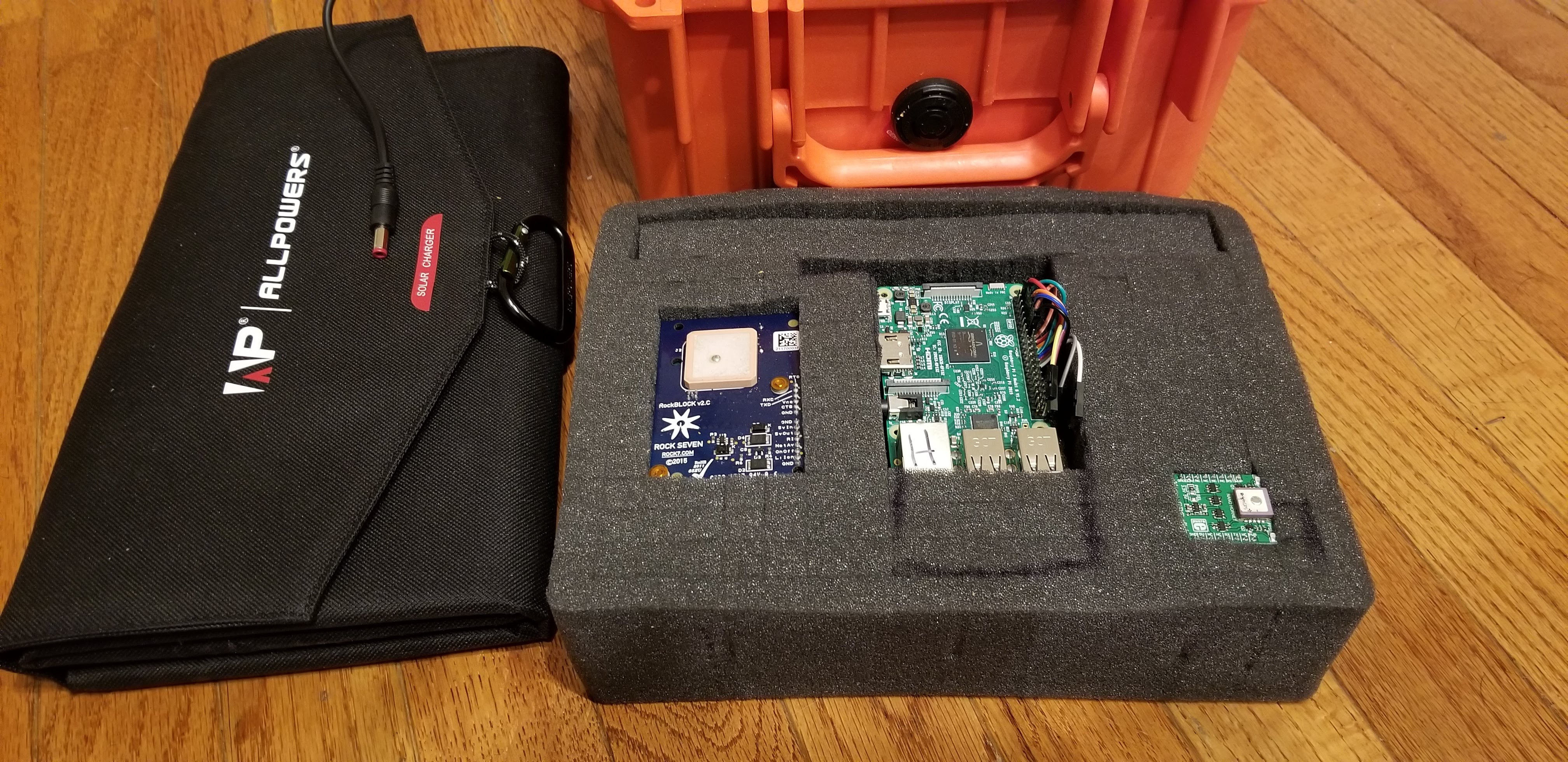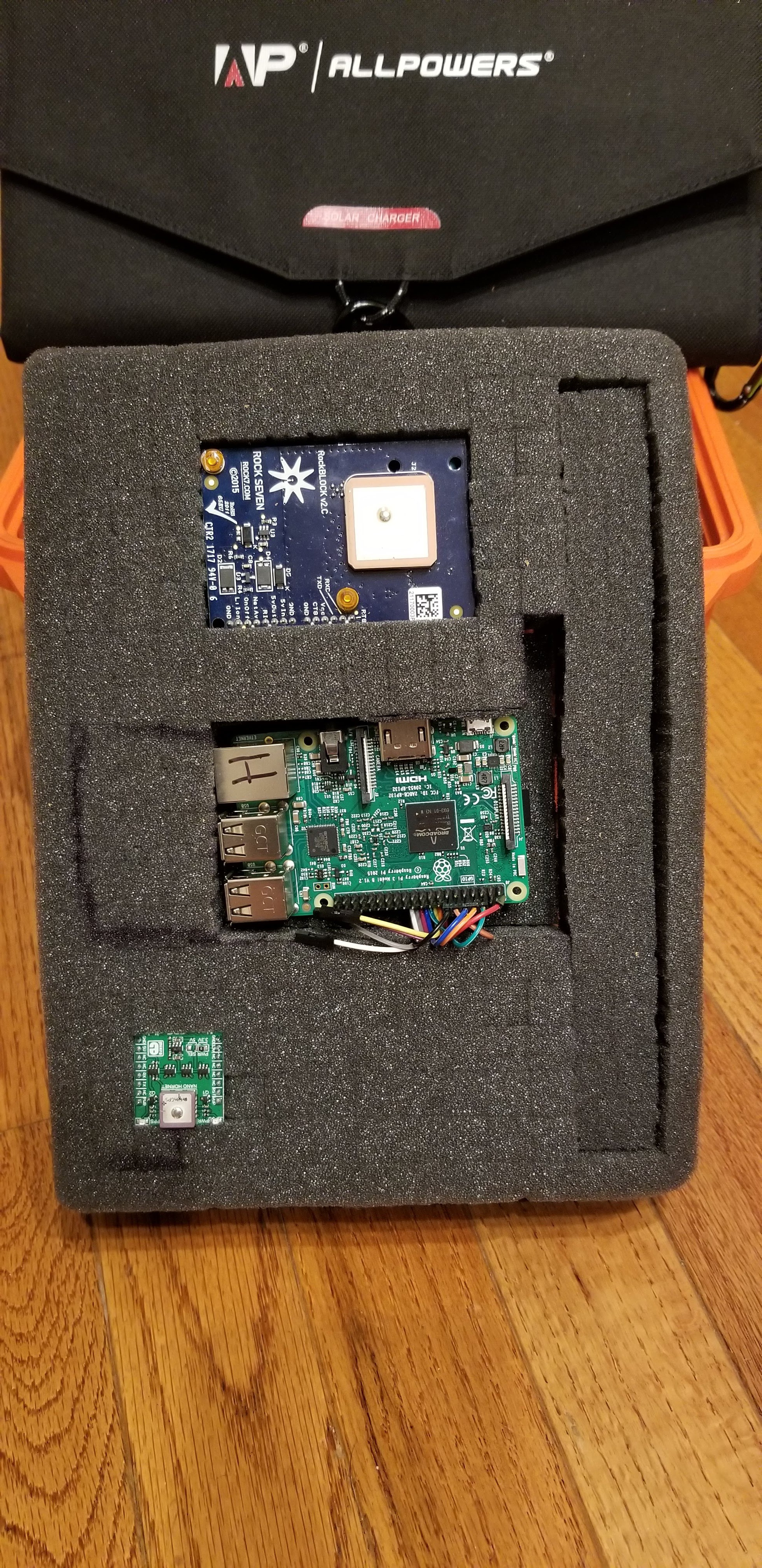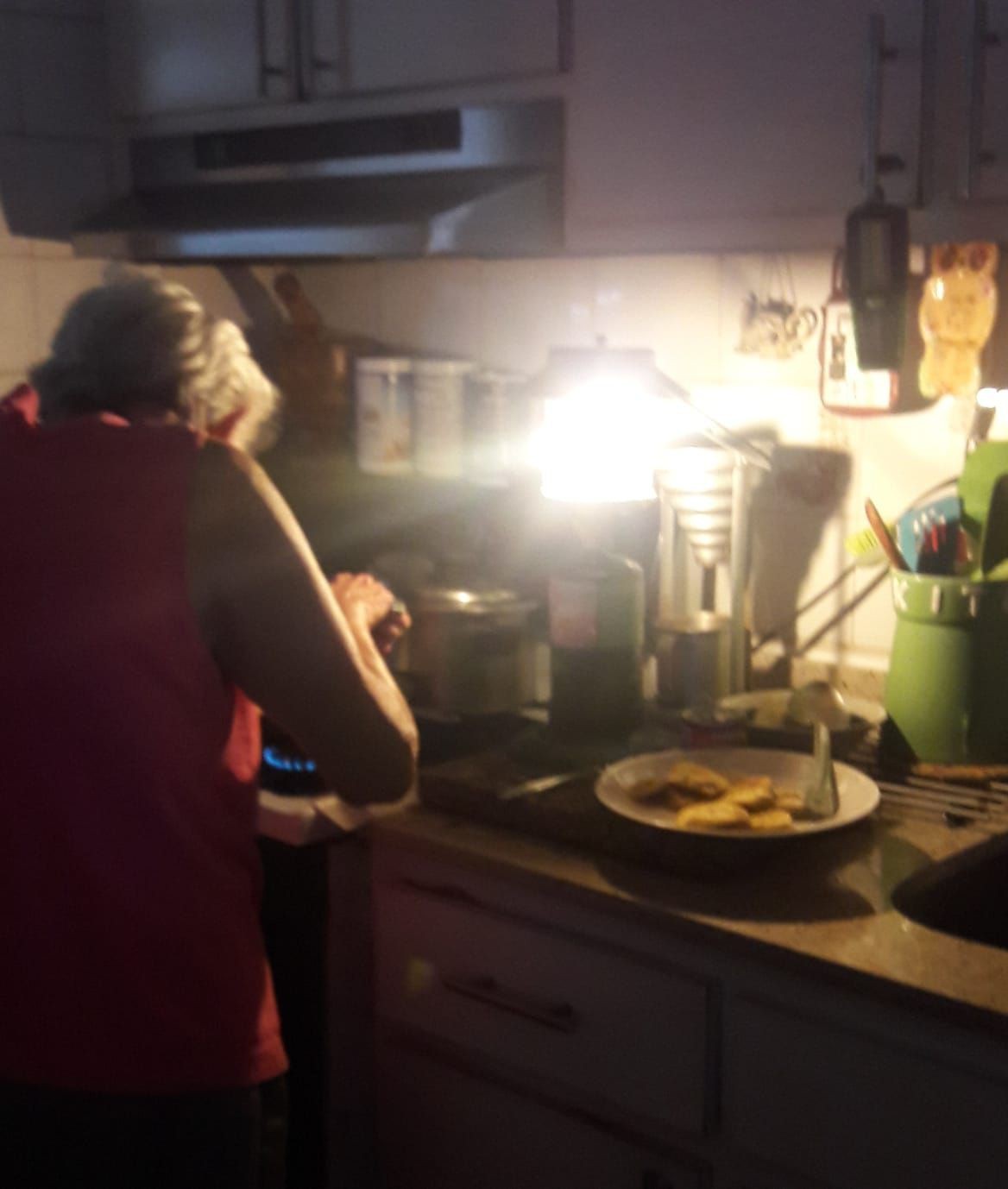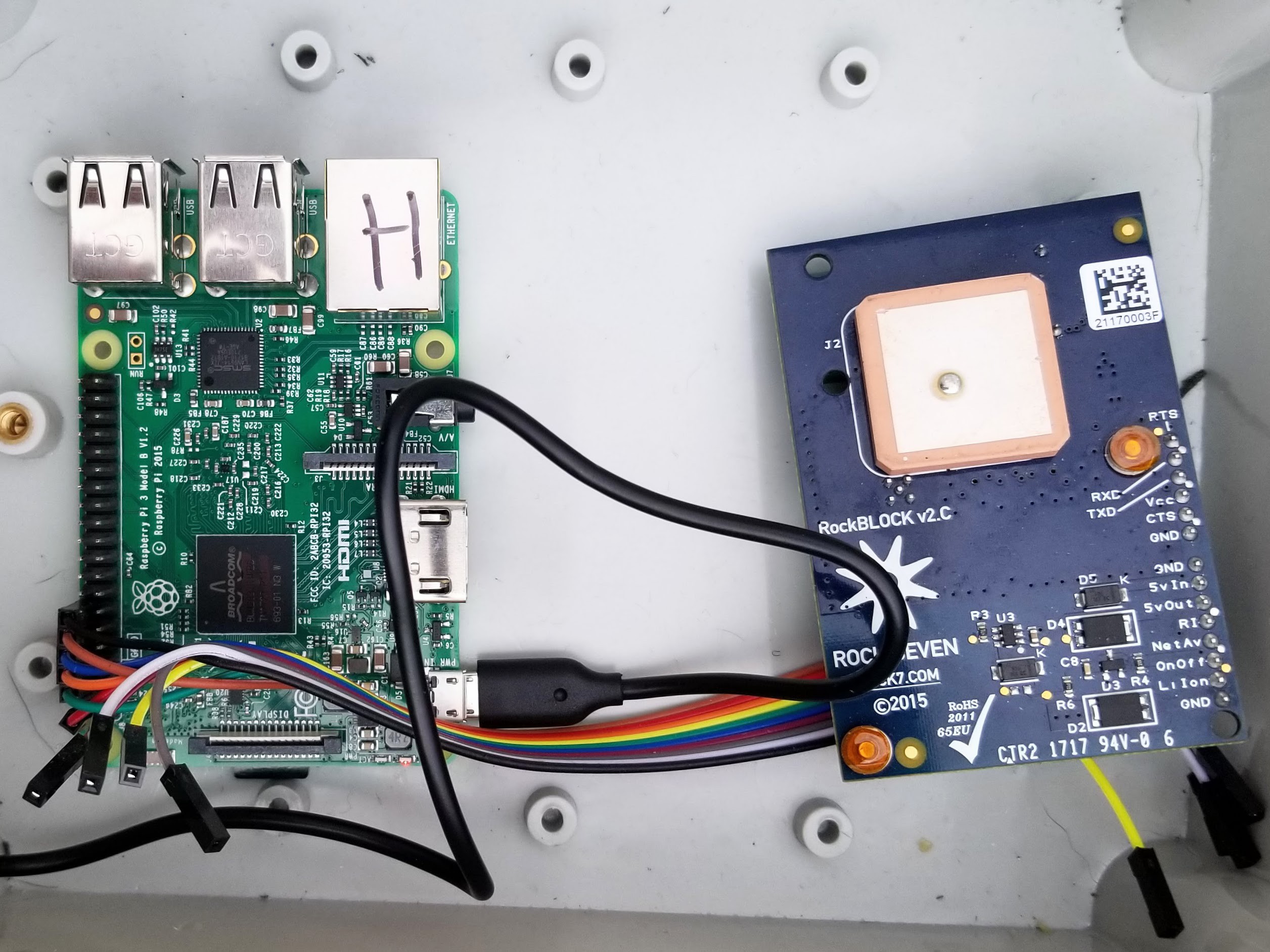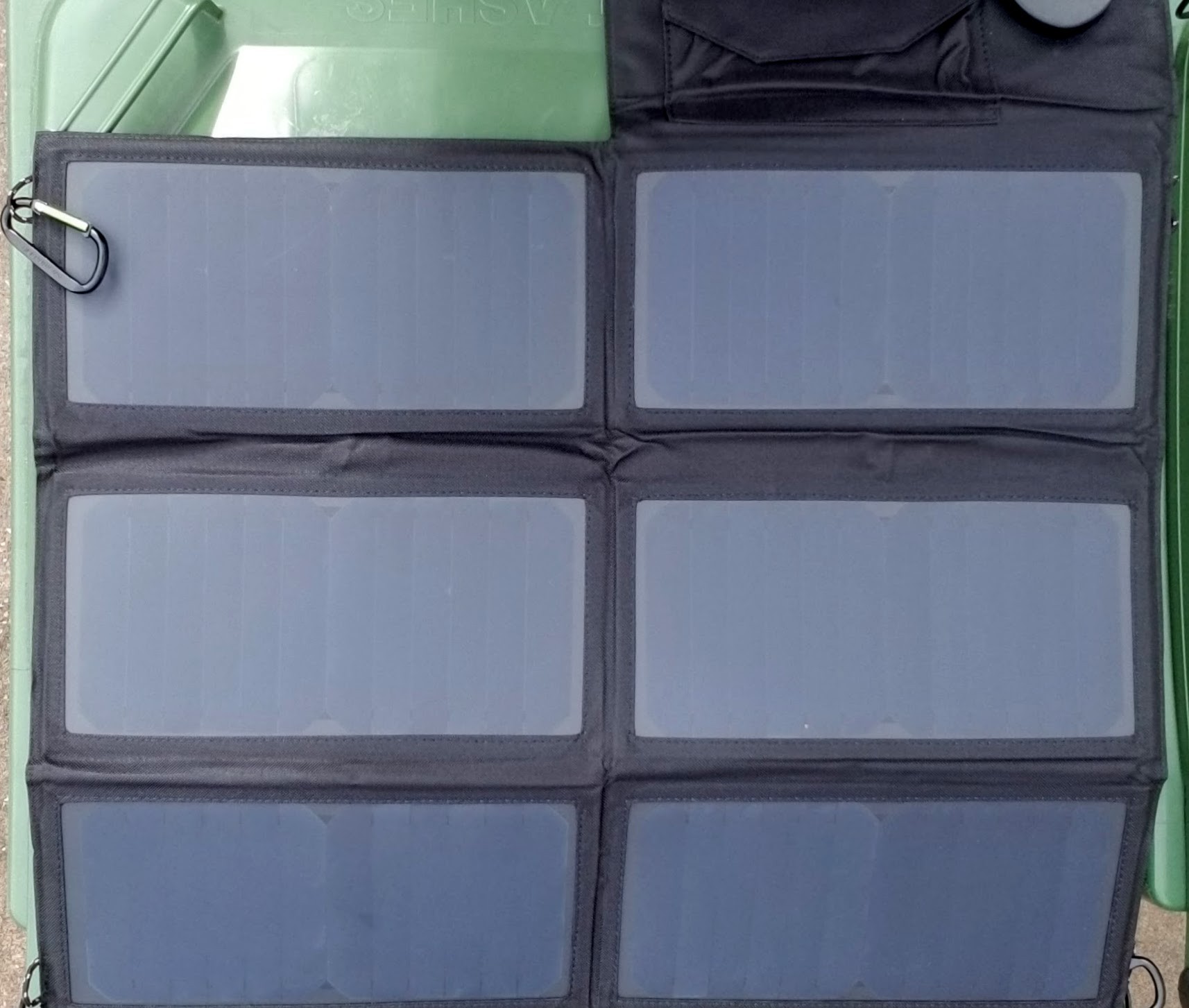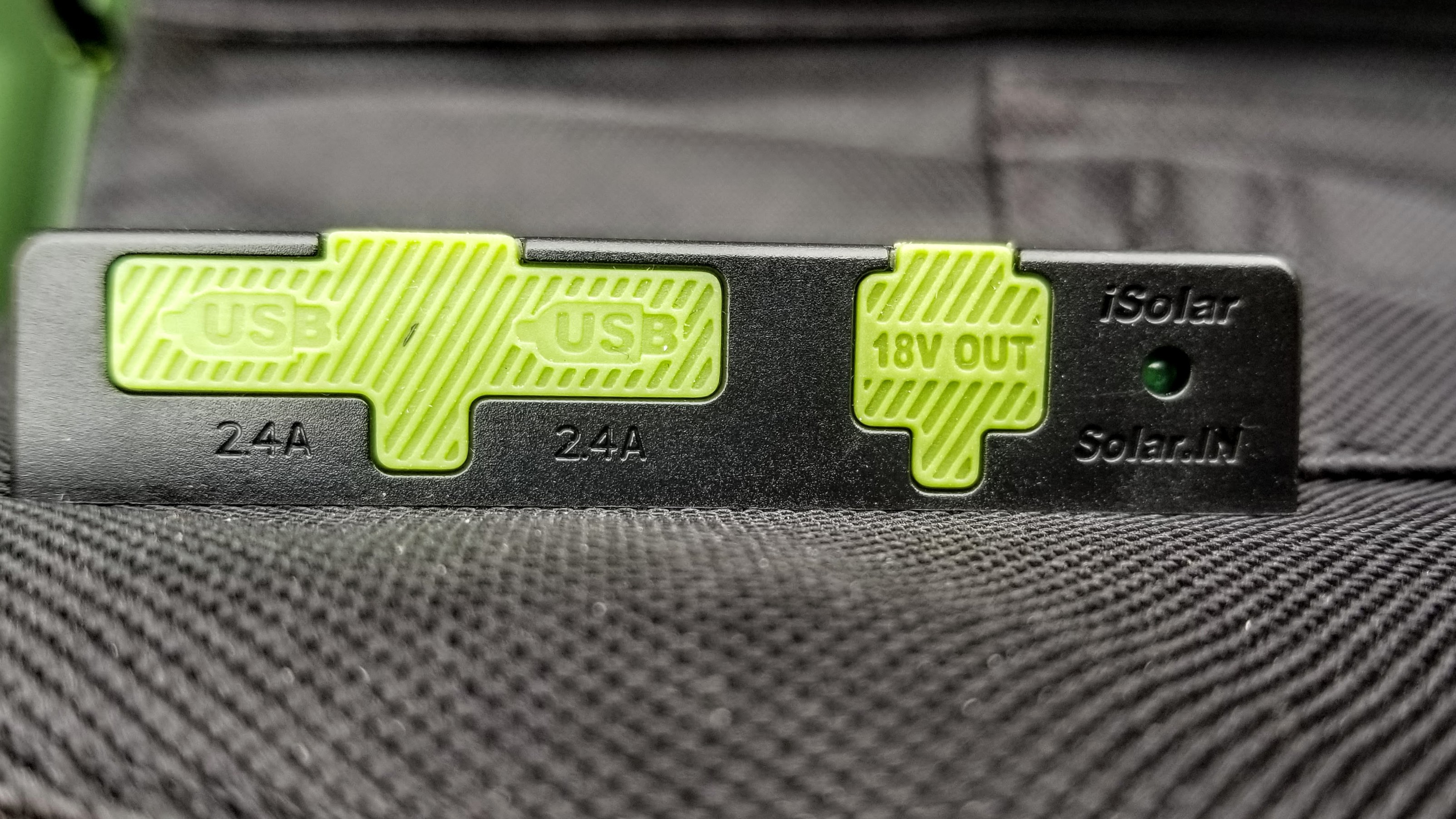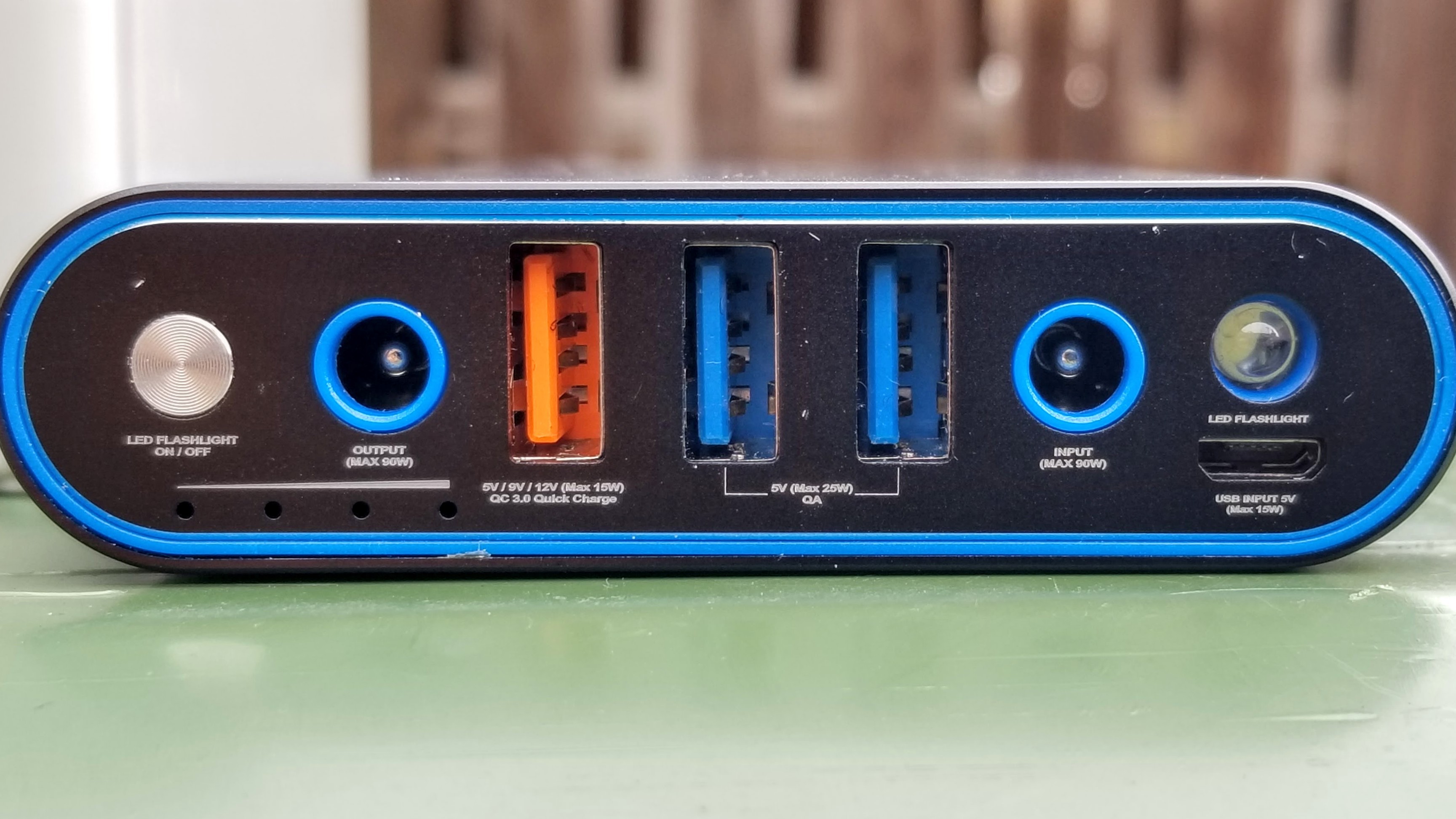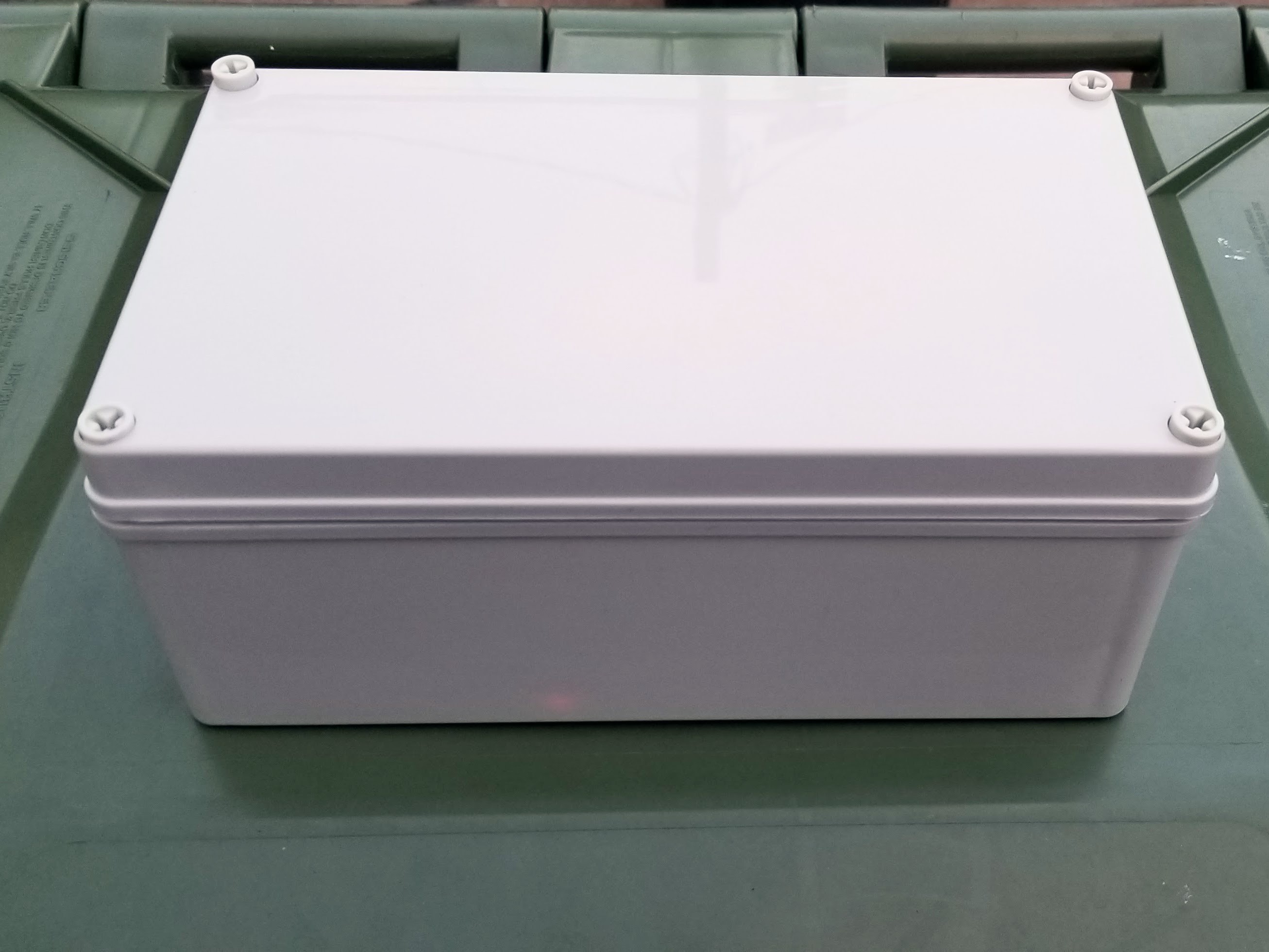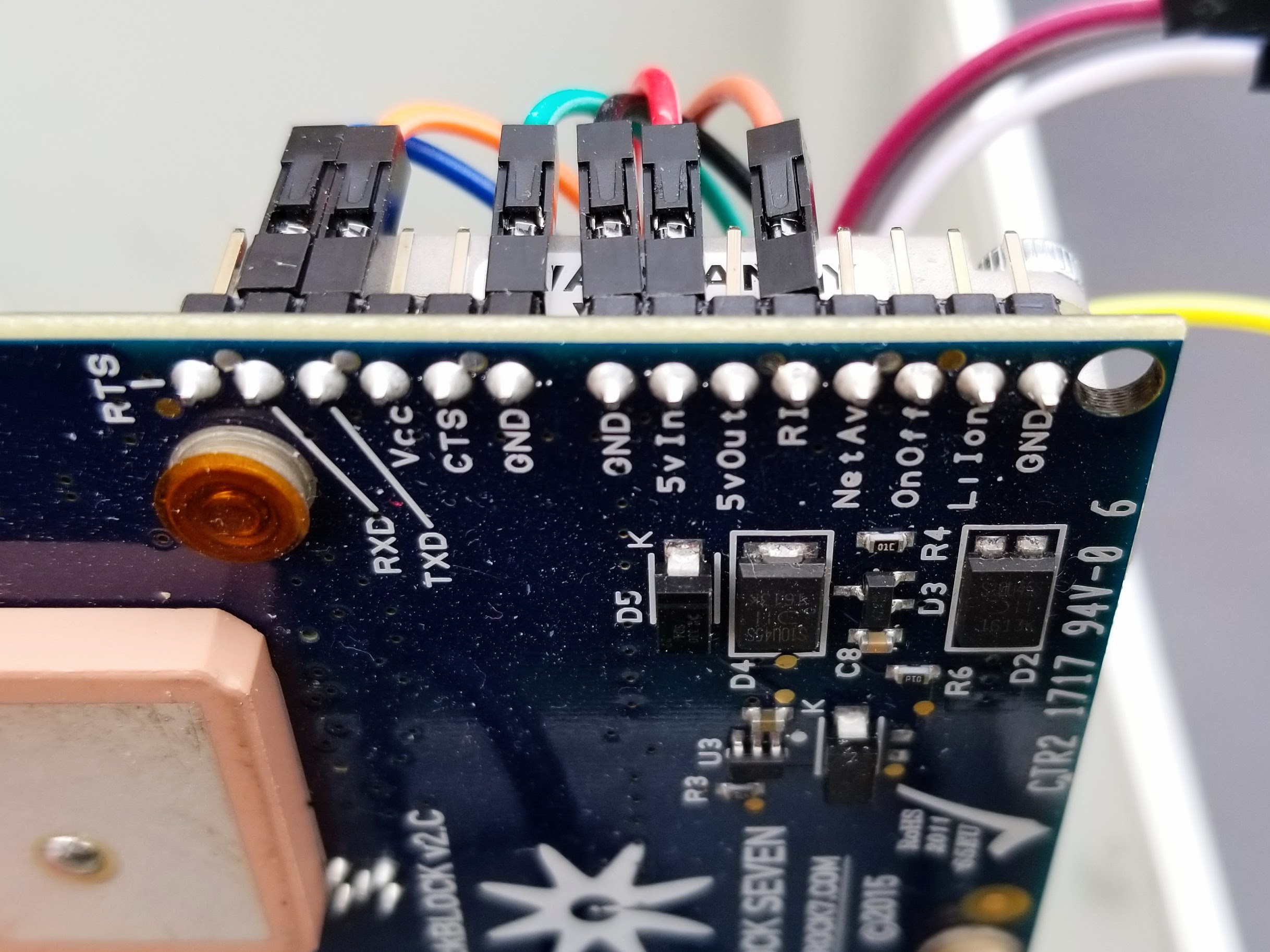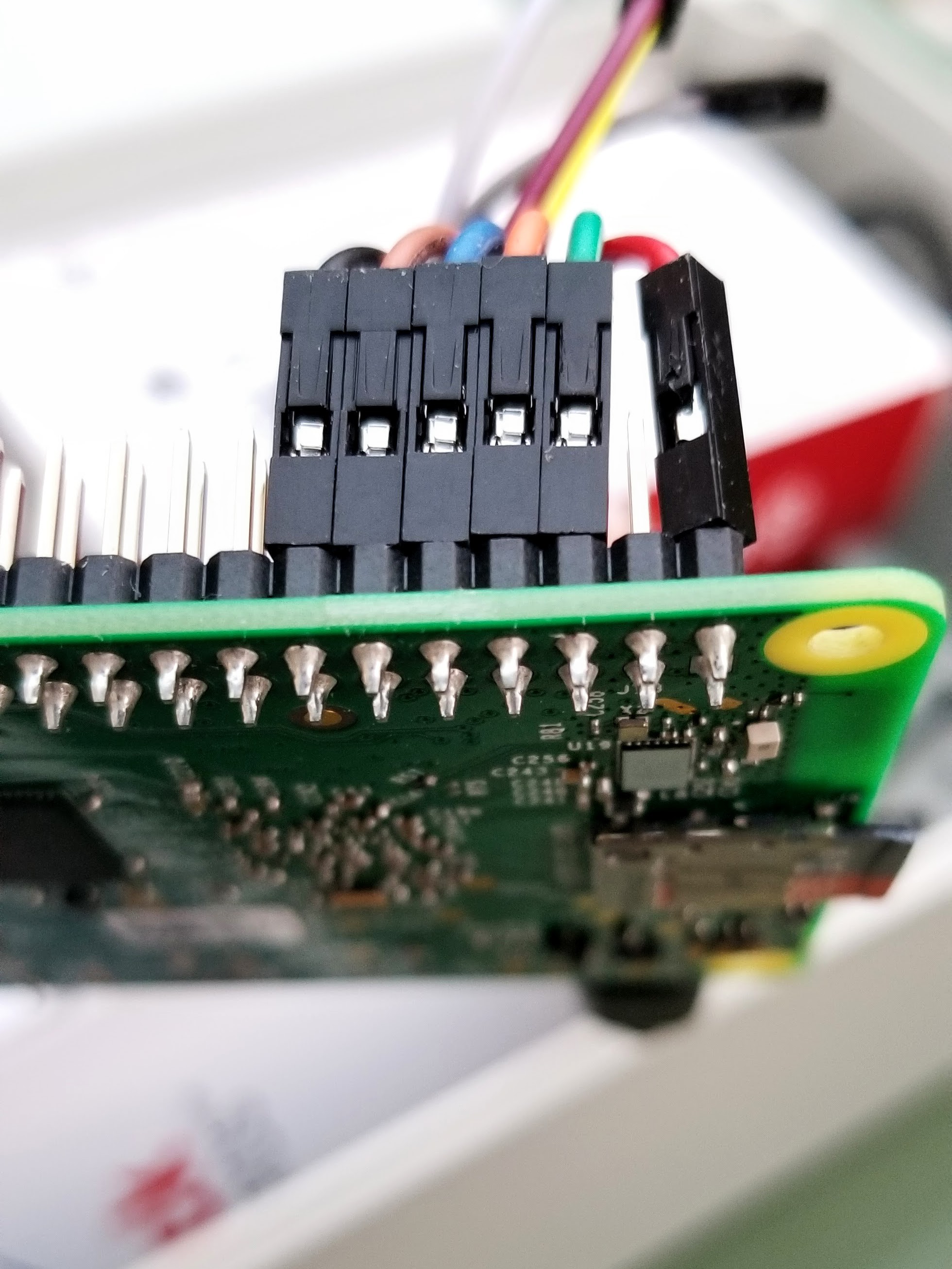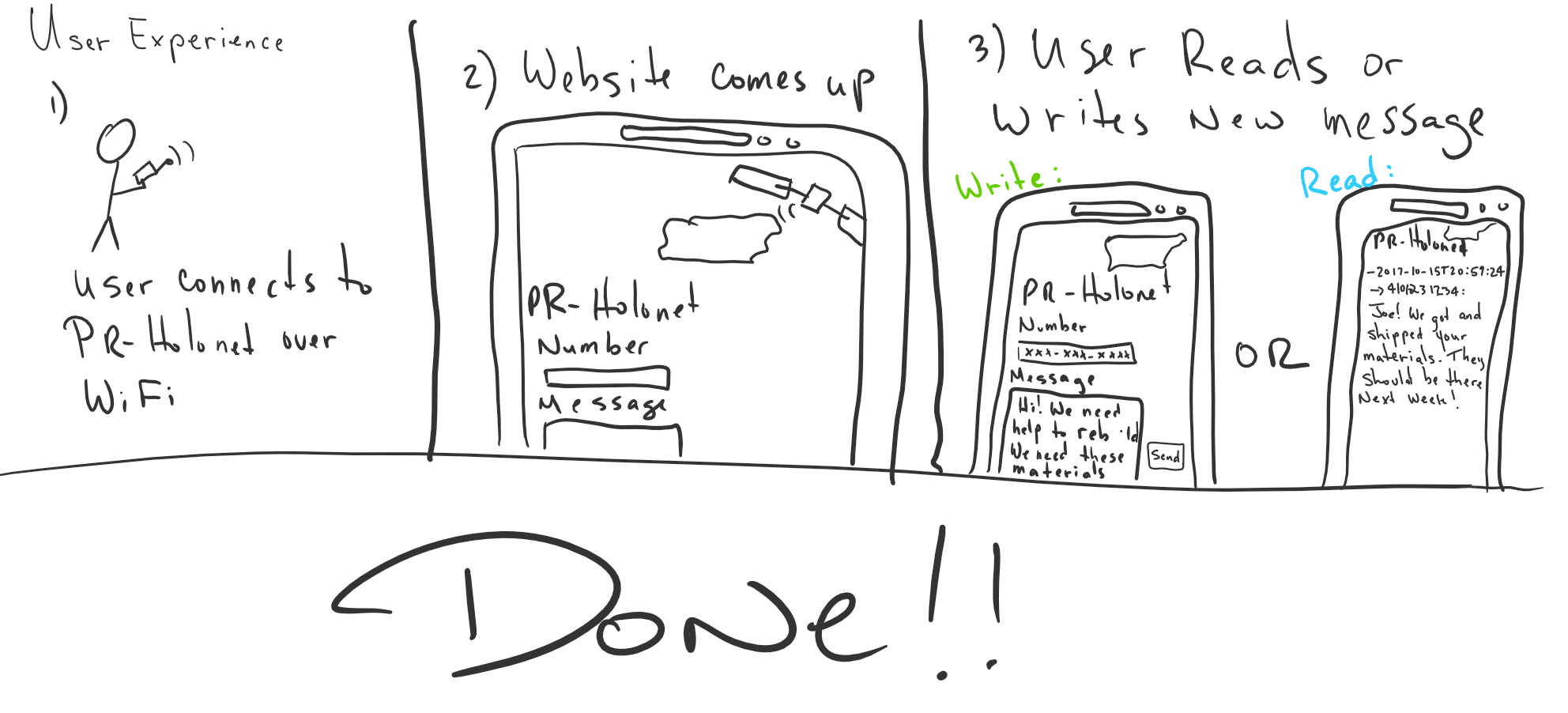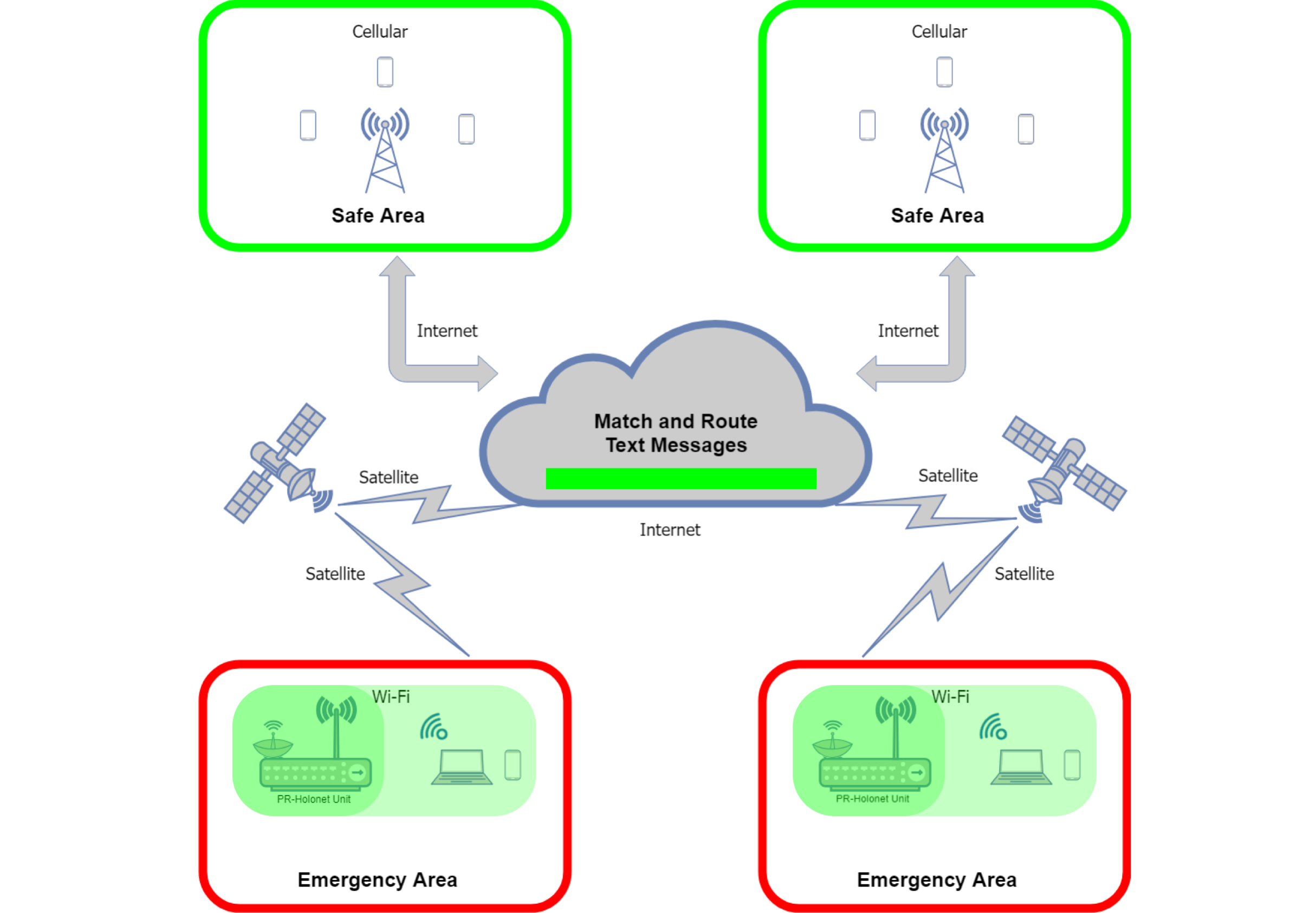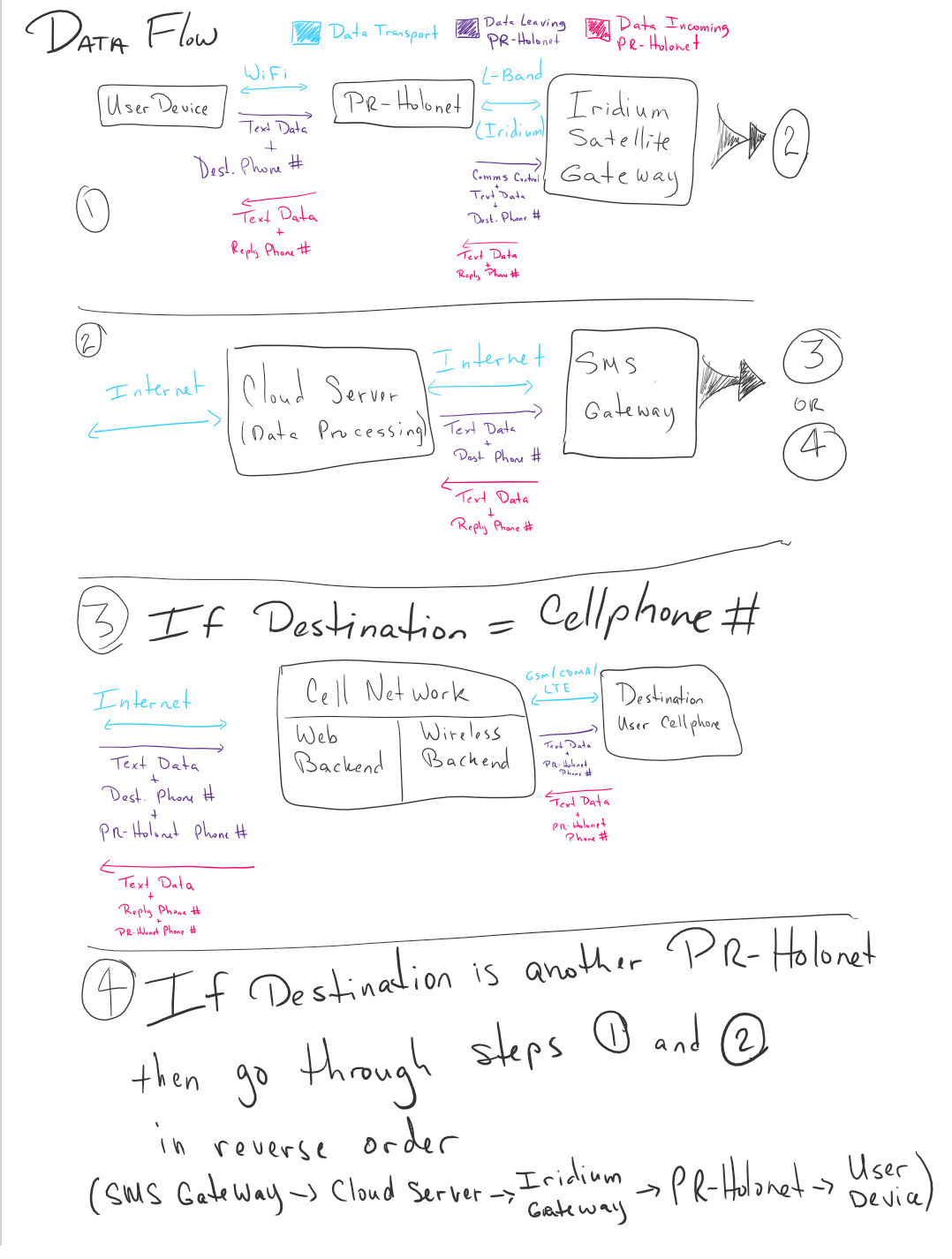-
Hackaday Prize 2018 Cheatsheet
10/22/2018 at 05:26 • 0 commentsHello there!
If you are looking for information on PR-Holonet, you can use this cheatsheet as a way to get a sense of where everything is at on the project page. If you have any questions feel free to drop me a line in the comments section. If you are looking to provide feedback on bugs, feature requests, or suggestions, put an issue up on the GitHub repo.
Thanks!-- Inventive Prototypes
Build a working prototype of PR-Holonet
Done.
- See the project video for a recorded demo
- did a demo at the 2018 NYC maker faire as part of the Hackaday guest panel speakers (https://twitter.com/hackaday/status/1043532657437470720)
- Pictures!
Project Profile
- Video, project details, project goals
- Pictures
- Top Logs
- System Design: An initial dive in
- For a high-level description of how the system works
- System Design: Playing with numbers (Costs)
- For information on component sourcing and costs
- On why I built this project. Build Hope
- Licensing
- System Design: An initial dive in
- Where's the code at?
- Soo, how do I build this thing???
- Where are all the easter eggs?
- Around... ;)
-
Licencias
10/17/2018 at 02:31 • 0 comments¡Hola! Este blog será corto :)
PR-Holonet es un proyecto open source, y su uso está regido por la licencia BSD-3. Mi meta para este proyecto es que cualquier persona que lo necesite pueda usarlo. Especialmente esas personas hábiles que lo quieran utilizar para ayudar a otros. Si eres uno de ell@s, ¡Adelante!
Gracias a la realidad de los proyectos open-source, PR-Holonet puede hacer uso de herramientas desarrolladas por otros grandes innovadores de manera que no se ha tenido que empezar desde cero. Estos proyectos han hecho el proceso de desarrollo inmesurablemente más eficiente y rápido. A todo aquel que ayuda y aporta a proyectos open-source. ¡Gracias!
Ahora bien, en el espíritu de respetar las licencias de todos los proyectos utilizados en PR-Holonet, he aquí una lista de los proyectos con sus correspondientes licencias:
- Python
- setuptools
- MIT License
- Flask
- BSD
- flask_webpack
- GPL v3
- phonenumbers
- Apache 2.0
- pyserial
- BSD
- RPI.GPIO
- MIT
- setuptools
- Node.js
- babel-core
- MIT
- twilio
- MIT
- babel-loader
- MIT
- bootstrap
- MIT
- css-loader
- MIT
- extract-text-webpack-plugin
- MIT
- file-loader
- MIT
- jquery
- MIT
- manifest-revision-webpack-plugin
- ISC
- node-normalize-scss
- MIT
- node-sass
- MIT
- sass-loader
- MIT
- scss-base
- MIT
- style-loader
- MIT
- sync-exec
- MIT
- url-loader
- MIT
- webpack
- MIT
- babel-core
Gracias a todos por tomar un minuto de su tiempo para leer este artículo. Si tiene alguna otra pregunta, o quiere aprender más acerca de licencias open-source no dude en visitar (inglés) :
¡Hasta la próxima!
Inventive.Prototypes
- Python
-
Licensing
10/17/2018 at 02:22 • 0 commentsHi! This is going to be a short one :)
For the purposes of use, PR-Holonet is a BSD-3 licensed open source project. My goal is for anyone who needs it to use it. Especially anyone who wants to help others with it. Go for it!
Thanks to the awesomeness of open source, PR-Holonet is made possible by standing on the shoulders of giants. That is, other awesome projects that have enabled me to put this system together way faster than if I had had to build everything from scratch. Those projects, and their corresponding licenses, are: (Thank you all!!)
- Python
- setuptools
- MIT License
- Flask
- BSD
- flask_webpack
- GPL v3
- phonenumbers
- Apache 2.0
- pyserial
- BSD
- RPI.GPIO
- MIT
- setuptools
- Node.js
- babel-core
- MIT
- twilio
- MIT
- babel-loader
- MIT
- bootstrap
- MIT
- css-loader
- MIT
- extract-text-webpack-plugin
- MIT
- file-loader
- MIT
- jquery
- MIT
- manifest-revision-webpack-plugin
- ISC
- node-normalize-scss
- MIT
- node-sass
- MIT
- sass-loader
- MIT
- scss-base
- MIT
- style-loader
- MIT
- sync-exec
- MIT
- url-loader
- MIT
- webpack
- MIT
- babel-core
Thank you all for taking a minute to check this post out. Thank you a TON to all the awesome developers who have made this project possible through their own open source contributions.
If you have additional questions about open source licensing, what it means, and what the options are, here is a link with good information:
Until the next post!
Inventive.Prototypes
- Python
-
Code is up!! - ¡El código esta disponible!
08/13/2018 at 01:57 • 0 commentsHello Everyone!!
I'm happy and excited to say that the code is finally up! Please treat this as a very early alpha. HOWEVER, if you are the type that:
- Loves to jump in headfirst into new projects
- Are opinionated and have respectful yet constructive criticism
- Like to test things out hot off the oven
Then you are so totally my type!
The goal for this project is that anyone who needs it can build it, so if you take the time to pull and build and notice a few things that, uhm, make your experience... --- let's say, less than ideal --- then throw me a line. Post an issue on the github page and I'll slowly but surely get to it.If you are NOT the coding type, then I honestly TREASURE your opinion as well. Remember this project is meant to help in emergency situations with emphasis on the people willing and able to help. No requirements for tech geniuses here (although they are always welcome).
Until the next log, hack away!
--Inventive.Prototypes
PS: Although I would love to see this project help others I'll make it clear that I am not making any warranties or claims to fitness - implicit or otherwise - as to the use of this project. Please understand that if you decide to use it you do so at your own risk.
--------------------------
¡Hola a todos!
Me alegra poder anunciar que el código para el proyecto esta disponible. Por favor, trátenlo como una versión alfa muy temprana. PERO, si eres el tipo de persona que:
- Le encanta aprender de nuevos proyectos
- Puedes brindar crítica respetuosa y constructiva
- Le encanta trabajar con tecnologías y herramientas nuevas
¡Entonces eres mi tipo de persona!
La meta principal de este proyecto es que cualquier persona que lo necesite lo pueda construir, así que si tomas de tu tiempo para montar el proyecto y encuentras el proceso, digamos, no muy claro entonces déjame una pregunta o un comentario por medio de los "issues" en github.Si NO eres el tipo de persona que sabe programar, también atesoro tu opinión. Recuerda que este proyecto esta diseñado para ayudar en situaciones de emergencia, con enfásis en la gente disponible para ayudar, no en los genios técnicos ( Aunque si eres un@ eres siempre bienvenid@).
Eso es todo por ahora, ¡hasta luego!
-- Inventive.Prototypes
PS: Aunque me encantaría saber que el proyecto es útil para otros quiero dejar claro que no doy garantía de uso o propósito - directa o indirectamente - relacionada al uso de este proyecto. Por favor entienda que si decide usarlo, lo hace a su propio riesgo.
-
Quick Preview!! - ¡Un pequeño avance! (Human Computer Interface Challenge)
08/03/2018 at 05:59 • 0 commentsHello everyone!!
I've been hard at work the last couple months working on the physical design of the system as well as polishing off a working version of the code in time for the Human Computer Interface Challenge.
Besides being great for initial communications right after a natural disaster, PR-Holonet essentially turns ANY computer or cellphone with wifi and an internet browser into a satellite-based two-way communications system that can be used anywhere in the world. At that point, it's up to the user's imagination what it can be used for.
I hope to post some more logs soon, as well as info on a really cool project I'm trying to get done with the system to help post-hurricane victims. For now enjoy the pictures of the system using a now waterproof cable gland pelican case system.
Stay tuned and thanks for the support!
----------------------------
¡Hola a todos!
He estado trabajando arduamente en estos últimos meses en el diseño físico del sistema. Además he estado trabajando en el código necesario para correr el sistema con miras a someterlo al Human Computer Interface Challenge.
Además de su misión principal, que es proveer comunicaciones luego de un desastre natural, PR-Holonet permite que cualquier computadora o celular con WiFi y un navegador de internet puedan ser utilizados como un sistema de comunicaciones bidireccional a través de satélite desde cualquier parte del mundo. Queda de parte de la imaginación del usuario la infinidad de usos que pueda tener esto.
Espero poder proveer más detalles concretos pronto, así como noticias de un proyecto que estoy tratando de desarrollar con el sistema para ayudar a víctimas de huracanes. Por ahora les dejo unas fotos recientes del sistema, en su nuevo estuche con una glándula para el cable de cargar el sistema. Todo a prueba de agua.
¡Que tengan un buen día y gracias por el apoyo!
-- Inventive.Prototypes
![]()
![]()
![]()
![]()
![]()
![]()
![]()
![]()
![]()
-
Quick Preview!! - ¡Un pequeño avance! (Human Computer Interface Challenge)
08/03/2018 at 05:58 • 0 commentsHello everyone!!
I've been hard at work the last couple months working on the physical design of the system as well as polishing off a working version of the code in time for the Human Computer Interface Challenge.
Besides being great for initial communications right after a natural disaster, PR-Holonet essentially turns ANY computer or cellphone with wifi and an internet browser into a satellite-based two-way communications system that can be used anywhere in the world. At that point, its up to the users imagination what it can be used for.
I hope to post some more posts soon, as well as info on a really cool project I'm trying to get done with the system to help post-hurricane victims. For now enjoy the pictures of the system using a now waterproof cable gland pelican case system.
Stay tuned and thanks for the support!
----------------------------
¡Hola a todos!
He estado trabajando arduamente en estos últimos meses en el diseño físico del sistema. Además he estado trabajando en el código necesario para correr el sistema con miras a someterlo al Human Computer Interface Challenge.
Además de su misión principal, que es proveer comunicaciones luego de un desastre natural, PR-Holonet permite que cualquier computadora o celular con WiFi y un navegador de internet puedan ser utilizados como un sistema de comunicaciones bidireccional a través de satélite que puede ser utilizado en cualquier parte del mundo. Queda de parte de la imaginación del usuario la infinidad de usos que pueda tener esto.
Espero poder proveer más detalles concretos pronto, así como noticias de un proyecto que estoy tratando de desarrollar con el sistema para ayudar a víctimas de huracanes. Por ahora les dejo unas fotos recientes del sistema, en su nuevo estuche con una glándula para el cable de cargar el sistema. Todo a prueba de agua.
Que tengan un buen día y gracias por el apoyo!
-- Inventive.Prototypes
![]()
![]()
![]()
![]()
![]()
![]()
![]()
![]()
![]()
-
System Design: Playing with numbers (Costs)
04/29/2018 at 19:26 • 0 commentsHello! Thanks for taking the time to visit the project!
This post will explain all costs associated with assembling a PR-Holonet unit, activating it, and operating it. In the ballpark of things, the cost of building a PR-Holonet system as presented in this post will vary from $420 to $600 depending on your final configuration. The differences only affect the capacity of the system to operate in the absence of enough sunlight; as well as the capacity to power/recharge other equipment or the ability to recharge and keep the system operational at the same time. It does not affect the core functionality of sending and receiving messages. It also bears mentioning that I will not be covering shipping costs or taxes. The system has been designed to minimize the difficulty of sourcing the components needed as well as to be used pretty much anywhere; but that also means that I can't, in good faith, give good numbers on shipping costs or taxes to cover all scenarios for anyone to build it.
All cost estimates provided in this post will be in US dollars. Please convert as necessary if you are living in another country.
This log is long, and it contains a lot of information. I may break it up later in the future. For now, grab a snack, turn some music on, and enjoy.
Thank you!
Assembly Costs
The two key components of this system, the Raspberry Pi 3 B and the Rockblock MK II, should be available at fixed pricing.
The rest of the costs may vary depending on sourcing or capacity. The list of items is as follows:
- A portable cellphone battery charger
- A foldable solar cell charger
- A non-metallic project box (ideally water-proof)
- A microSD memory card
- Female to female jumper cables
- Spare micro USB cables
PR-Holonet is meant to be used in emergency and technology-austere environments. For this reason, the actual list of parts has been put together to enable a system that can:
- Work on its own
- Power, enable, or leverage other tech equipment that can be of use to help relief efforts
Following is a list of the actual parts and costs being used to build the system. For a budget version of the system, see the end of the post.
Total Kit Cost: $600
System Core
The core is made up of the Pi, Rockblock, female to female jumper wires, microUSB cables, and microSD card.
Part Name Description Cost ($) Source Raspberry Pi 3 B The brains of the operation $35.00 Adafruit RockBlock MK II Iridium Short Burst Data
transceiver$249.50 Sparkfun Samsung EVO microSD card Capacity
- 64GB
Class 10 UHS 3
Speed
- Write: 60Mbps
- Read: 90Mbps$19.99 Amazon Female to Female Jumper Wires - 20-pack tape
- 6 inches each
- .1" pitch$1.95 Sparkfun Anker Micro USB Cables Two microUSB cables that can be
used to power the Pi or
charge the battery$9.99 Amazon Project Case
To allow the project to be weather resistant, I've selected a dust-proof, water resistant project box. Down the road I'd like to really test out how hot the system gets and actually test its water-proof worthiness, for now the current case gets the job done.
Part Name Description Cost ($) Source Uxcell Junction Box
DIY Case Enclosure
GrayDimensions
- 250mm x 150mm x 100mm
Dustproof
IP65$21.99 Amazon Power System
The battery and solar charger components are the systems that will vary in cost the most. They are also the components that will dictate whether PR-Holonet can be used to increase the number availability of USB powered tech for relief efforts. The main trade-off in choice selection will boil down to:
- Ability to charge the battery and power PR-Holonet simultaneously
- Ability to use the battery to operate PR-Holonet without interruptions and charge a phone or other USB device
- Ability for the solar charger to charge the system battery and another USB device simultaneously
- The time it will take the solar charger to fully charge the system battery under ideal sun conditions
The list of components that will provide the best capability under the current design is:
Part Name Description Cost ($) Source BatPower PROE 2 ES10
40000mAh
BatteryDimensions
- 7.2 x 3.2 x 0.7 inches
Capacity
- 40000 mAh
Useful Features
- Can be charged by microUSB cable
or 18V barrel charger
- Integrated LED "Flashlight"
- Can charge itself and power/recharge
systems simultaneously
- Can be used to power a laptop
- Can output up to 90W of power$169.99 Amazon ALLPOWERS 36W
Foldable Solar
ChargerDimensions
- 12.8 x 7.7 x 3.1 inches
Weight
- 3.02 pounds
Useful Features
- Higher number of PV cells
than ~20W systems means
more comparative power for
the same amount of sun
- Two 5V/2.4A ports ( up to 12W
output per port)
- One 18V/1.5A port ( up to 27W )
- If your battery supports 18V
power input, then it can charge
faster than using regular USB 2.0
to charge it
- Water-resistant (according
to marketing material)$89.99 Amazon
Activation Costs
Activation costs are comprised of 3 parts:
- The satellite gateway communications service (Rock7 CORE)
- The cloud data processing service (Amazon AWS: Lambda, S3)
- The cellular number and message routing service (Twilio)
None of these services require a contract, so the system can be used for the time needed and then deactivated.
Rock7 Core
To use the Rockblock MK II, a monthly activation fee of an estimated $14 is required. There is no minimum yearly commitment required. Use as needed.
Amazon AWS (Lambda Services)
Amazon's pricing model is based on resource consumption. PR-Holonet easily falls in their free of cost range. However, you will need to create an account and enter your credit card information. No contract required.
Twilio
Twilio charges a monthly fee for providing phone numbers. The fee can vary, in my case it is $3 per month for 1 number. Data is billed per message. No contract is required.
Operating Costs
Operational costs, for the effect of this post, will refer to any costs other than monthly activation fees. For PR-Holonet, this is encompassed by the data transmission and handling costs. PR-Holonet is a low-bandwidth communications system; the data transmission costs are due in its majority to the satellite gateway services.
The operational costs are also encompassed by the same three services mentioned in the previous section:
- The satellite gateway communications service (Rock7 CORE)
- The cloud data processing service (Amazon AWS: Lambda, S3)
- The cellular number and message routing service (Twilio)
Rock7 Core
Rock7 charges for every message sent and received over its satcom gateway. Some RockBlock actions, such as pinging the servers for pending messages, may incur in costs. All costs are based on a unit of cost called a "credit". A credit is any burst of data sent or received from a RockBlock MK II that is 50 bytes or less. All transmitted and received data is charged based on the "credit" scheme.
The cost of each credit is based on the total amount of credits acquired at the time of purchase. Credits do not expire and can be used so long as there is an active account and Iridium transceiver available. Credits are also shared among all Iridium devices registered to it.
At present the prices for credits are (amount of dollars subject to change based on currency exchange values):
Number of Credits Cost per Credit British Pounds (£) / US Dollars Bundle Price British Pounds / US Dollars ($) 100 Credits £0.11 / $0.15 £11.00 / $15.16 200 Credits £0.10 / $0.14 £20.00 / $27.56 500 Credits £0.09 / $0.12 £45.00 / $62.01 1000 Credits £0.08 / $0.11 £80.00 / $110.24 2000 Credits £0.07 / $0.10 £140.00 / $192.92 5000 Credits £0.06 / $0.15 £300.00 / $413.40 10000 Credits £0.05 / $0.08 £500.00 / $689.00 20000 Credits £0.04 / $0.06 £800.00 / $1102.40 Amazon AWS (Lambda Services)
Amazon AWS is NOT FREE. However, due to the low use of computational resources required by PR-Holonet it falls within the no-charge tier for Lambda services. Thus, there is no additional impact to operating costs because of cloud processing.
Twilio
Twilio charges $0.0075 per message for the first 5 million messages routed through their services in the US.
An alternative, budget version of PR-HolonetIf cost is a priority, here is a version of PR-Holonet that will get you a working system for close to $200 less in parts. Be mindful that you compromise:
- Ability to charge the battery and power PR-Holonet simultaneously
- Ability to use the battery to operate PR-Holonet without interruptions and charge a phone or other USB device
- Ability for the solar charger to charge the system battery and another USB device simultaneously
- The time it will take the solar charger to fully charge the system battery under ideal sun conditions
Total Kit Cost: $418.85
System Core
Part Name Description Cost ($) Source Raspberry Pi 3 B The brains of the operation $35.99 Adafruit RockBlock MK II Iridium Short Burst Data transceiver $249.50 Sparkfun Samsung EVO microSD card Capacity
- 32GB
Class 10 UHS 3
Speed
- Write: 60Mbps
- Read: 90Mbps$12.99 Amazon Female to Female Jumper Wires - 20-pack tape
- 6 inches each
- .1" pitch$1.95 Sparkfun Anker Micro USB Cables 2 microUSB cables that
can be used to power the
Pi or charge the battery$9.99 Amazon Project Case
Part Name Description Cost ($) Source Uxcell Junction Box
DIY Case Enclosure
GrayDimensions
- 250mm x 150mm x 100mm
Dustproof
IP65$21.99 Amazon Power System
Part Name Description Cost ($) Source Anker
13mAh
BatteryDimensions
- 7.2 x 3.2 x 0.7 inches
Capacity
- 13000 mAh$31.99 Amazon Allpowers
21 W
Foldable Solar
ChargerDimensions
- 12.8 x 7.7 x 3.1 inches
Weight
- 3.02 pounds
Useful Features
- Integrated 6000mAh battery$54.99 Amazon
References, Links, and Resources
- Amazon.com [ https://www.amazon.com/ ]
- Sparkfun.com [ https://www.sparkfun.com/ ]
- Adafruit.com [ https://www.adafruit.com/ ]
- Amazon Lambda Pricing [ https://aws.amazon.com/lambda/pricing/ ]
- Amazon S3 Pricing [ https://aws.amazon.com/s3/pricing/ ]
- Rock7 Core Pricing [http://www.rock7mobile.com/products-rockblock ]
- Twilio Pricing [ https://www.twilio.com/sms/pricing/us ]
You Made It!!That is the end for this log. I hope it has provided a clear understanding of the costs associated with building and operating PR-Holonet. If you have questions, send them my way!
-
Cultivemos la Esperanza
04/22/2018 at 23:21 • 0 commentsPasó un mes y medio antes de poder saber algo de papi. Pasaron 2.5 meses antes de poder escucharlo. En esos meses descubrí la diferencia entre no poder hablar con mi familia por no tener tiempo y no poder hablar con mi familia porque no habían maneras disponibles y sin saber cuándo o cómo podría o si sería posible.
Quiero que este proyecto se enfoque en cómo ayudar a la gente que lo necesite. Que pueda mejorar basado en las experiencias de la gente que ayuda. El enfoque de los escritos para este proyecto será acerca de los aspectos técnicos de como construir y utilizar PR-Holonet. Pero en éste trataré de explicar el por qué de este proyecto.
Este escrito NO será técnico, y todo aquel interesado sólo en esa información puede pasarlo por alto.
Al criarse con huracanes, uno aprende a tenerles respeto. No le deseo un huracán a nadie.
Durante el paso del huracán Irma, ayudé a papi a preparar la casa. El tuvo que viajar a Puerto Rico a ayudar a mi abuela y tía, y yo me quedé con mis hermanas. Fue una situación tensa e intensa, pero gracias a Dios todo salió bien. El huracán no pasó directamente por Puerto Rico y mi familia lo sobrepasó bien. Pero los huracanes no son sistemas que afecten sólo a unos pocos, y Key West no tuvo tanta suerte. Después de Irma, pensé que ese era el fin de la temporada, que las probabilidades de otro huracán fuerte eran pocas. Después de todo, ese era el segundo huracán fuerte de la temporada luego de Harvey en Houston.
Una semana después apareció María. Puerto Rico suele tener suerte al tratarse de huracanes fuertes. Por lo general tienden a pasar suficientemente altos o bajos como para no impactar la Isla directamente. Pero María me llenó de un terror que surge de la impotencia ante la naturaleza... Una semana luego de ver cómo Irma transformó Miami en una nueva pequeña Venecia, habíase aquí un huracán categoría 5 con intención de visitar directamente a Puerto Rico. Una semana y media después de Irma, María barrió la Isla...
No sé si pueda explicar en plenitud lo que uno siente ante una situación así. En general, cuando ocurren situaciones malas en Puerto Rico uno se queja. Pero luego que lo procesa es manos a la obra y a trabajar porque al final del día nadie hace las cosas por uno. Somos responsables de moldear el futuro con nuestras manos. Luego de María, tenía cierta esperanza de empezar a escuchar la gente quejándose. La tiraera de culpa de un bando a otro que, aunque no es ideal ni productiva, tiende a señalar que la Isla se esta movilizando a reestablecer la normalidad.
Los Puertorriqueños somos alborotosos y felices. Hablamos "hasta por los codos". A veces hablamos un tanto de más, jeje, pero así somos. Mi esperanza era escuchar a la gente, aún si era quejándose. Porque significa que las cosas están malas, pero nunca tan malas como para no sacar el tiempo para quejarse. Como decimos en Puerto Rico, "pudo haber sido peor", esa era la esperanza mía para el mejor escenario posible ante el impacto de este huracán.
Sin embargo, después de María... Nada. 1.5 meses de nada. Un ensordecedor, aterrorizante, vacío lleno de nada... De la misma manera que uno reconoce la seriedad de una conversación con una pareja, o amigo, o familiar por la abundancia con la que se comparte el silencio; así mismo fueron desconectadas de el resto del mundo 3.4 millones de voces. Durante esa primera semana luego de María no había energía eléctrica, ni agua potable, ni comunicaciones, ni gasolina, ni carreteras, ni supermercados y, en el caso de muchos, no hubo hogar. Esto se extendió a la semana próxima, y luego la otra, y la otra, y la otra... A seis meses del huracán, todavía es la hora que no hay un sistema de generación eléctrica estable o completamente operacional. Entiendo perfectamente que son muchos los factores que condujeron a este estado. Pero el hecho de que ésta sea la situación actual, que el proceso de restauración no se haya completado, al sol de hoy y a dos meses de la próxima temporada de huracanes sólo hace mas relevante la magnitud y escala del daño. Ésto ha sido una situación de crisis a gran escala, quizás hasta de proporciones de crisis humanitaria.
Cuento con la suerte de tener amistades que me sacaron del estupor inicial temprano luego del huracán. Inmediatamente comenzamos a conectar con otros puertorriqueños para ver cuál era la mejor manera de ayudar. Establecimos colectas de comida y artículos de primera necesidad. Indagamos a través de todos nuestros conocidos para encontrar gente que pudiese ayudar: camioneros, pilotos, gente que trabajara en aerolíneas que nos donaran espacio de maletas en los vuelos, aerolíneas locales que nos pudiesen donar vuelos, compañías que nos donaran contenedores de embarque, compañías que nos donaran barcos para transportar esos contenedores; y todo ésto para asegurarnos que la ayuda que enviáramos llegara directo a las manos de la gente que lo necesitaba. Se escribieron notitas en los artículos para que nuestra gente supiera que los tenemos presente, que importan, que no los olvidamos, que los amamos. La necesidad de hacer algo ante esta emergencia unió extraños y creó nuevas amistades y conecciones. Al final del día se encontraban personas de todo tipo de profesión echando chistes porque sin querer queriendo terminamos convirtiéndonos en expertos en logística y transportación. Hago hincapié en que estábamos echando chistes, porque en Puerto Rico se aprende que ante la adversidad puedes quejarte y cruzarte de manos o echar un chiste, reírte y meter mano para salir adelante. Y en Puerto Rico se ríe mucho.
Si algo he aprendido de María es que como individuos somos pequeños pero NO impotentes. Aprendí que la esperanza es un sentimiento que une a la gente. Y que esos lazos que crea permiten que podamos enfrentar la adversidad juntos. Así sea buscando la manera de enviar 5,000 lbs de equipo médico a la Isla, o ayudando a enviar equipo de comunicación VSAT a Vieques (una isla-pueblo de Puerto Rico). O confiándole el prototipo inicial de PR-Holonet a un nuevo amigo que sólo has conocido por 24 horas en un "hackathon" literalmente en la otra esquina del país porque él se identifica con el proyecto y quiere ayudar. He visto todo tipo de personas, totalmente extraños entre sí, trabajar juntos bajo la esperanza y el deseo de ayudar a que las cosas mejoren. Para el bien de sus familias y el de las familias de ésos a los que acababan de conocer.
Así de intimidante como ha sido toda esta experiencia, he tenido la suerte de conocer un grupo único de personas comprometidas y líderes a quienes tengo el honor de llamar amigos hoy día. Con ellos co-fundé el grupo de ayuda Puerto Rico De Pie (Puerto Rico Stands) para ayudar a una comunidad de líderes en el sector Maná en Barranquitas, Puerto Rico. Me quito el sombrero en admiración ante esta comunidad de líderes que con convicción y esperanza han hecho su misión asegurar que se puedan recuperar de los estragos de María.
Me consta que mi situación no es única. Me consta que no soy el primero ni seré el último en pasar por una situación igual o parecida a ésta. Pero éste fue mi momento de aprender. Éste fue mi momento de poder darle algo de vuelta a la Islita que me crió y me dió mis valores. He aprendido que ante los retos más grandes, la esperanza compartida cuando va de la mano de la acción resulta en la base para un mejor futuro. Estos retos te ayudan a encontrar fuerza dónde no sabías que existía.
PR-Holonet surge porque en el tiempo en que vivimos, que se destaca por la variedad y el fácil accesso a medios de comunicación, me niego a pensar que toleremos la pérdida de vida humana por falta de comunicación. Ésto es inaceptable en este país. Ésto no debería pasar en el resto del mundo. Punto y final.
Éste es mi granito de arena para ayudar cuando en el futuro surjan otros Irmas en Key West, Harveys en Houston, y Marías en Puerto Rico. Es mi mejor esfuerzo para sembrar la semilla de un sistema de comunicación accesible que aisle la infraestructura de comunicación de la zona afectada por un desastre natural. Este esfuerzo es, por demás, mi intento de sembrar la semilla que incluya en los procesos de recuperación el factor más importante para salir victoriosos, la gente afectada.
La esperanza une las personas y permite tomar acción ante la incertidumbre. Nos hace mejores. Nos hace más fuertes.
Cultivemos La Esperanza.
![]()
Esta viejita es mi abuela de 98 años. Es una piedra y es mi héroe. De ella no escucharás una queja. Nunca. Y nunca saldrás de su casa con hambre. Ni si quiera 6 meses luego de un huracán sin electricidad. Ella y papi me han enseñado a trabajar duro y luchar por lo que creo. Y doy lo mejor de mí para ser así.
-
Why build hope...?
04/20/2018 at 03:41 • 0 commentsIt took 1.5 months to learn anything about my dad. It took 2.5 months to finally hear him live over the phone. There is a difference between not having the chance to call your family, and not being able to and not knowing if you will be able to.
I want this project to focus on the good it is able to do. I want this project to grow on the experiences of how it gets to help people. I will focus all other posts on the system, how it works and how to use it. But in this one post I'll try to explain why I'm doing it.
This post will not be technical, and you are definitely welcome to skip it.
Growing up with hurricanes has taught me to be respectful of them. They are not an experience I wish on anyone.
I helped my dad during hurricane Irma, he had to travel to Puerto Rico and I helped with his house stateside. It was a tense situation to be in. Hurricanes are not trivial events. We prepared both houses, him in Puerto Rico with my grandmother and aunt and me with my sisters. Thankfully our family was blessed. Irma for the most part missed Puerto Rico. Key West was not so lucky. After Irma, I thought that had been it. That was the second big one for the season, Harvey had hit Houston a few days before. I thought, "Well 2 in one season should be it for the year".
A week later Maria shows up. Puerto Rico is lucky in the sense that more often than not the really bad hurricanes seem to miss the island by going a bit too high or too low for a direct hit. But Maria filled me with dread. A week after watching how Irma created a temporary Venice in Miami, here was a Cat 5 hurricane, getting ready to run straight through Puerto Rico. A week and a half after Irma barely missed Puerto Rico, the Island was swept.
I do not know that I can explain what it felt like. When something bad happens in Puerto Rico, you complain, loudly more often than not. Then you roll your sleeves up and get to work fixing it because at the end of the day, "no one will do stuff for you". You have to own your stuff. After Maria I hoped to hear that complaining, the usual blames being thrown, the ones that sadly are the indicatives of efforts being put together to fix the Island up as well as possible again.
Puerto Ricans are loud. And happy. We talk a lot. Sometimes more than we should, heh. I was hoping to hear that loudness, even if it was just complaining. It means things are bad, but never so bad you don't have the time to complain. As we say in Puerto Rico, "it could have been worse". I wished that to be the best case scenario.
After Maria though... Nothing. 1.5 months of nothing. Deafening. Exasperating. Nothingness. The same way one recognizes the seriousness of a conversation with a family member, or a partner, or a friend by the abundance of words not being said, this was 3.4 million people worth of muted voices. During the first week, there was no power, no potable water, no communication, no gas/petrol infrastructure, no roads, no grocery stores, and for a lot of people no home. And then for the next one, and the next one, and the next... 6 months out the electrical grid is still not stable or fully operational. I understand that there are multiple factors that led to this point. But the fact that this is even a thing, that recovery has not been possible as the next hurricane season comes up, speaks volumes about the situation, its magnitude and scale. I do not mean to trivialize the work of the first responders, government officials, and volunteers who have genuinely done their utmost to help. To those who have done everything within their purview. Thank you. But this was and is a very daunting situation, of humanitarian crisis scale even.
A couple friends snapped me out of the stupor caused by Maria early on. We immediately started connecting with other Puertorricans to figure out how best to help. Doing collection drives for food and basic need articles. Digging through our networks to learn about needs in the Island. Finding truck drivers, pilots, people who worked at airlines that could donate baggage space, people who could donate truck containers to ship all the collected help, local airline owners who could donate flights, ships to take the containers to Puerto Rico; all to bring relief and to make sure it got to where it was intended. With notes on the actual stuff letting people in the Island know that we care, that we don't forget, and that we love them. The need to do something about the situation created new friendships and connections. In the end you had people of all professions, joking that without intending to we became transportation, shipping, and logistics experts. If you pick up on my mentioning of us joking about it, it's because it's another Puertorrican thing. In the face of adversity you can cry in frustration or crack a joke and move on. Puertorricans joke a lot.
If Maria has taught me anything it is that as individuals we are small, but although we may feel like it, we are not impotent. It has taught me that hope is a shared sentiment that creates bonds between persons. And that those bonds enable them to surmount challenges together. Whether that is trying to transport 5,000 pounds of medical supplies. Or flying VSAT equipment to Vieques, an island town off the coast of Puerto Rico. Or trusting the initial PR-Holonet proof of concept to a new friend you've known ony for 24 hours at a hackathon on the other side of the country because he wants to help. I've seen all sorts of people who had never met, work together with a common hope and burning desire to make things better. For their families and the families of those they just met.
As daunting as this whole experience has been, I've been lucky enough to meet an amazingly wonderful set of people I now have the honor to call friends. I co-founded a group called Puerto Rico Stands with them to provide relief to an amazing and inspiring community called Mana in Barranquitas, Puerto Rico. This community has an awesome group of leaders who against all odds and with boundless amounts of hope has worked hard to recover and help others recover.
I know my situation is not unique. Many have gone through this. Many more will, still. It could have been worse. But this was my time to learn from this experience. And I learned that against the most daunting challenges the hopes of many, when acted on, become the base of a better future. They help discover strengths you were unaware of.
I came up with the idea for PR-Holonet because in an age known for communications, I refuse to believe and allow people's lives to be in peril due to a lack of comms infrastructure. This should not happen in the US. This should not be happening in the world. Period.
This is my grain of sand to help with the future Irmas in Key West, Harveys in Houston, or Marias in Puerto Rico. This is my best effort to plant the seed of an accessible communications systems that isolates the tool for relief, communication, from the zone of the disaster. And also, hopefully, a seed for getting the most important factor in relief involved, the people who were there in the first place.
Acting on shared hope unites people facing risks with unknown outcomes. It makes you and those around you better. It makes all of us stronger.
Let's. Build. Hope.
![]()
This lady is my 98 year old grandmother. She is a rock and my hero. You will not catch her complaining. Ever. And you will never leave her house hungry. Not even after 6 months out with no power. She and my dad have taught me to work hard and fight for what I believe. And I try my best to do it.
-
System Design: An initial dive in
04/18/2018 at 04:06 • 0 commentsHardware Communication Gateway
PR-Holonet consists of 2 parts:
- The hardware communication gateway
- The cloud backend
Both systems are meant to be as low cost and modular as possible. The full hardware communications unit is composed of :
- Raspberry Pi 3 unit ($35)
- Rockblock MK II Iridium Short Burst Data (SBD) modem ( ~$250)
- Cellphone Battery Charger ($170 or less, depends on what you get)
- Foldable Solar Charger ($60 to $90, depends on what you get)
- A waterproof case ( ~$20)
- 1 micro usb cable ( < $4)
- 6 female to female breadboard jumpers (< $1)
- The charging cable for your portable battery ( comes with battery)
![]() Raspberry Pi 3 and Rockblock MK II
Raspberry Pi 3 and Rockblock MK II
![]() 36W 18V solar charger
36W 18V solar charger
![]() You get 2 USB 2.0 charging ports (5V/2.4A) and one 18V/1.5A barrel port
You get 2 USB 2.0 charging ports (5V/2.4A) and one 18V/1.5A barrel port
![]() 40Ah Lithium battery. Can power a laptop. Also has a simple but useful LED "flashlight"
40Ah Lithium battery. Can power a laptop. Also has a simple but useful LED "flashlight"
![]() Nice waterproof box large enough for everything
Nice waterproof box large enough for everything
At its most basic setup, PR-Holonet is composed of the Raspberry Pi 3 and the Rockblock. The Pi runs a Flask web server that serves as the interface for the user. It is also responsible for generating the WiFi access point that users will connect to. The Pi is used to power the Rockblock MK II, which is responsible for beaming the messages up to the Iridium satellite constellation. The Rockblock talks to the Pi over serial and can be connected by hand to the Pi.
![]() Connecting the Rockblock
Connecting the Rockblock
![]() Connecting the Pi
Connecting the Pi
On a 26.8AH lithium battery, PR-Holonet can be on for a couple days (3 to 4 so far in my experience, although I have yet to do a well-documented test). Depending on needs, you can find upwards of 50Ah batteries which can also be used to power and recharge a full laptop. In my current iteration I am using a 40 Ah battery. When coupled together with a foldable solar charger, the system can effectively be on 24/7. What’s more, given that PR-Holonet consumes little power, the system can generate enough power for itself and for devices to connect to it. Ideally, you’ll want to use at least a 36W portable solar charger. It is small enough to be portable, but generates enough power to be useful, especially dealing with such a big battery. Between the solar charger and the battery, the system should be able to work through the night and a couple rainy days. It should also be able to charge a cellphone or laptop if needed.
In terms of setup, if you have a working backend system and a pre-made micro-sd card with the OS and PR-Holonet software, configuration is a matter of
- Putting the microSD card on the Pi
- Connecting 6 jumper cables (power, ground, tx, rx, ringer, ground) (yes, 2 grounds :) )
- Plug the battery into the Pi
- Count to 30
- You’re up!
You should see your WiFi access point pop up on your device. And that is it, PR-Holonet is running and ready to go!
![Using PR-Holonet Using PR-Holonet]()
Using PR-Holonet “You keep talking about the backend, but WHAT IS IT?”
You ask. Well, good question!
Cloud Services Backend
![Cloud Services Backend Cloud Services Backend]()
Cloud Services Backend The backend consists of three components:
- The Rockblock gateway
- An Amazon AWS setup
- Twilio
The Rockblock gateway refers to the Rock7 Core services. Rockblock being the Iridium antenna, Rock7 the company, and Core being their management portal. You’ll need to purchase credits (50 bytes = 1 credit) as well as pay the monthly activation fee ( ~$15).
From amazon you’ll need a free account to use the following services:
- CloudFormation
- Lambda
- Amazon S3
Finally you’ll need a phone number from Twilio that can be used for text messages. You’ll want 1 number per PR-Holonet unit as well as enough credit to support message routing.
The Rock7 Core system takes care of transmissions to and from the Iridium system. The Amazon cloud services handle processing the message, and Twilio handles routing to and from telephone numbers.
![Artist's Masterpice: Data Flow Artist's Masterpice: Data Flow]()
Masterful artistic rendition: Data Flow Hopefully this write up has conveyed a bit more information about some of the technical aspects of the project. If you have questions, ask away!!
Thank you for your support. Remember to vote/like!
PR-Holonet: Disaster Area Emergency Comms
An easy to build, setup, and use emergency communicator for disaster-struck zones with no working power or comms infrastructure.
